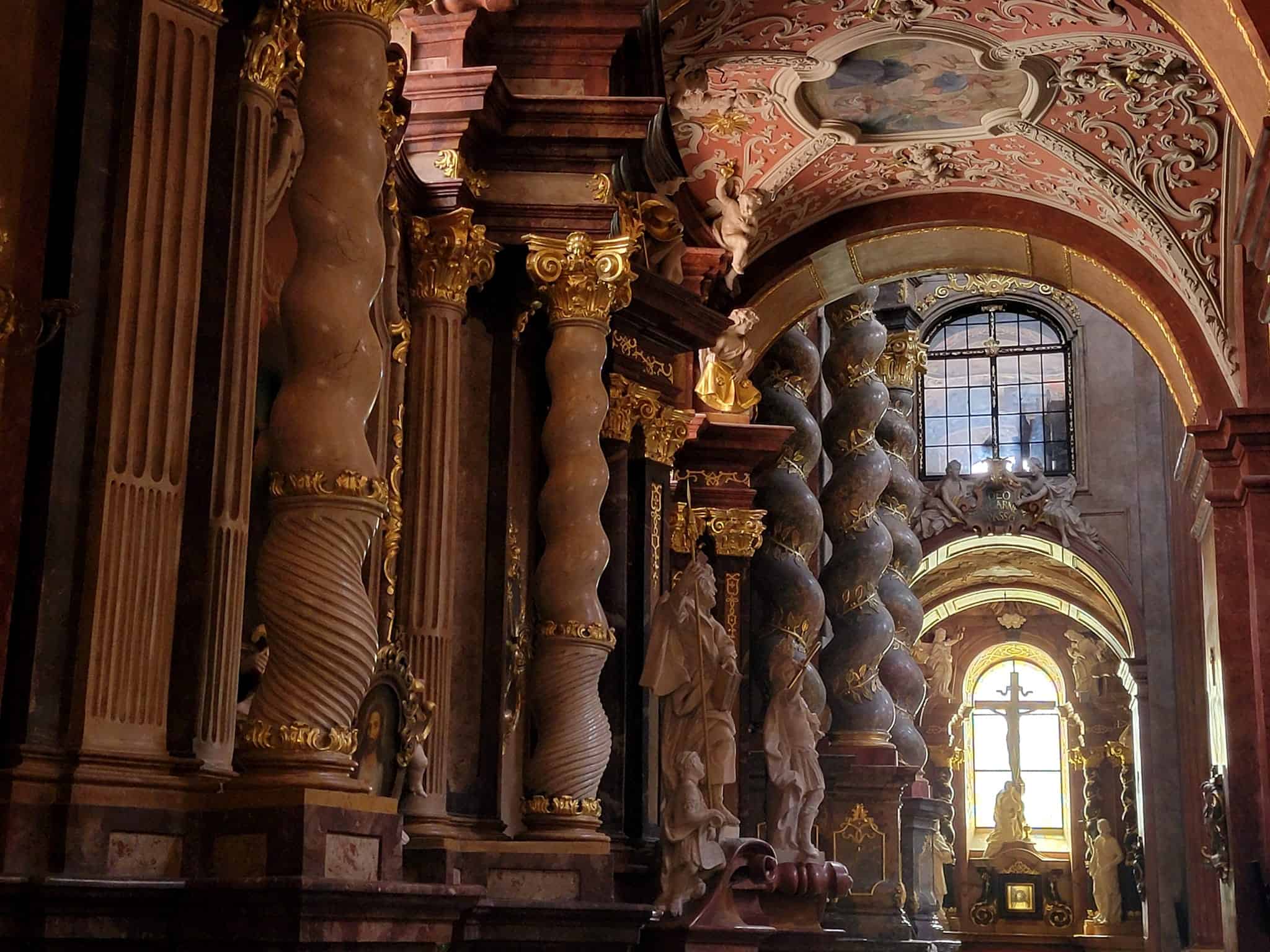There is no shortage of things to do in Poznan, Poland, although it still remains under the radar for most European travelers. Even for those who have discovered this beautiful, affordable country, Poznań usually doesn’t make the itinerary. Boy is everyone missing out! Get ready to discover all kinds of reasons that Poland’s first capital warrants a multi-day visit.
1. The Poznań Cathedral and Crypt
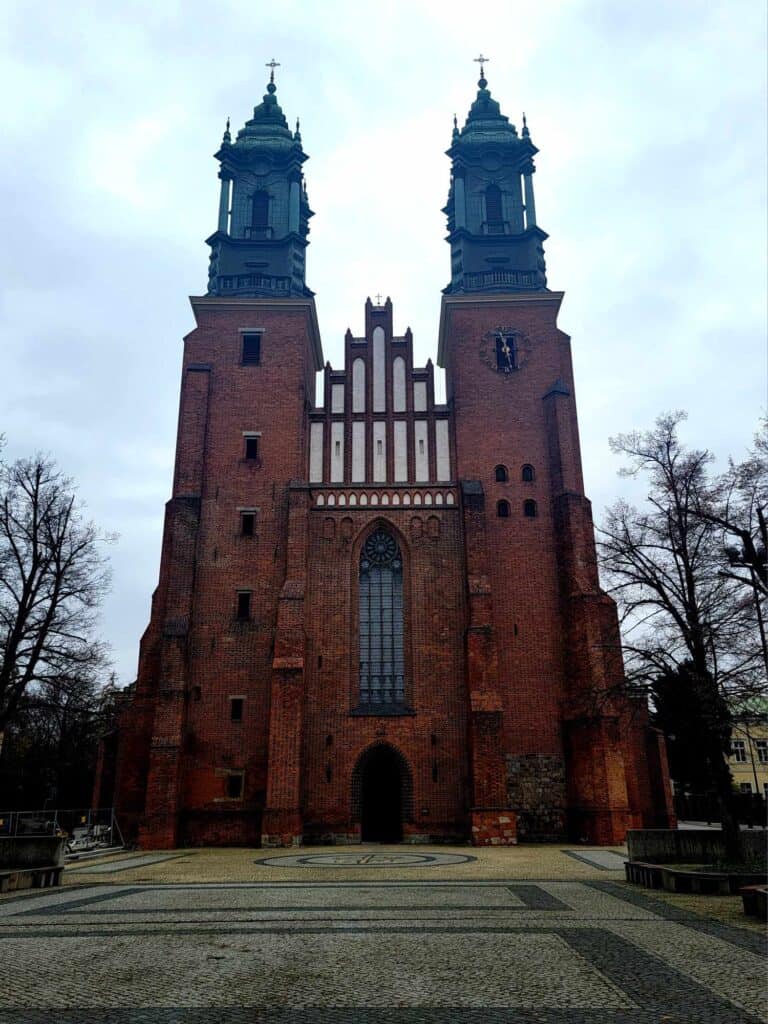
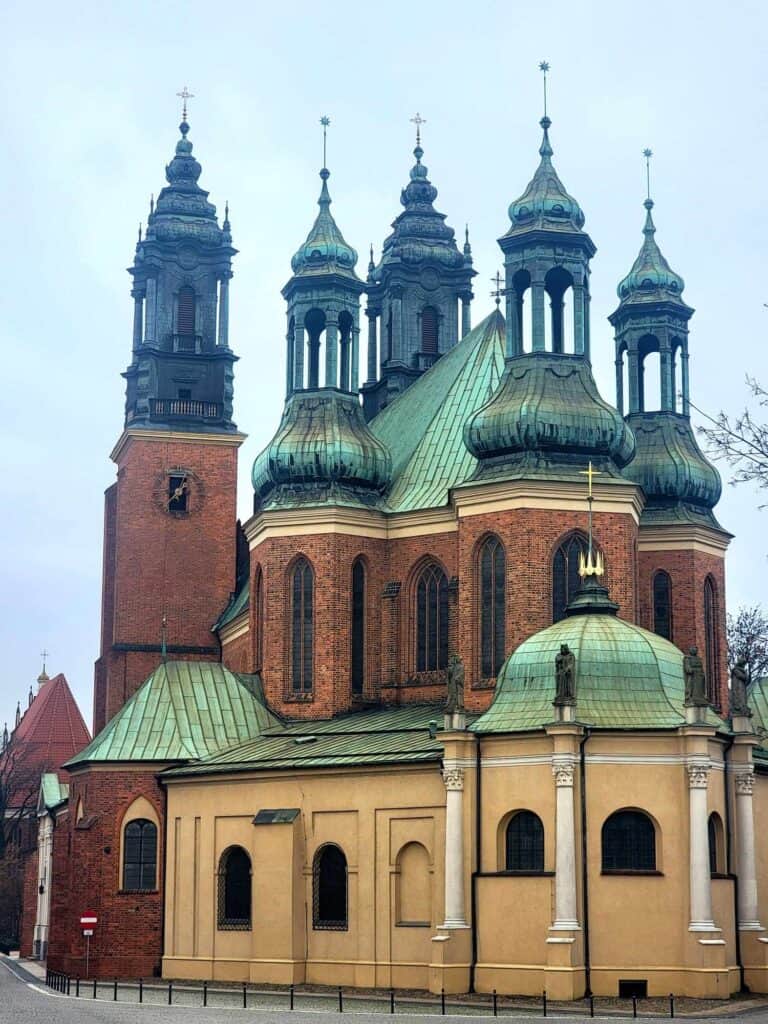
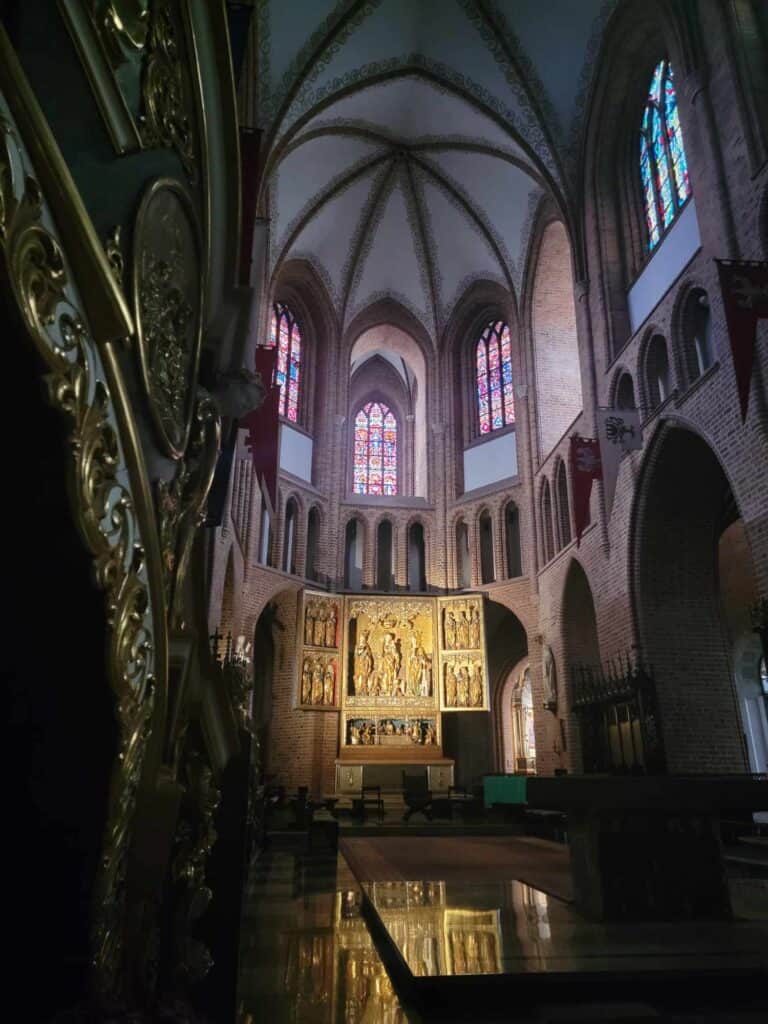
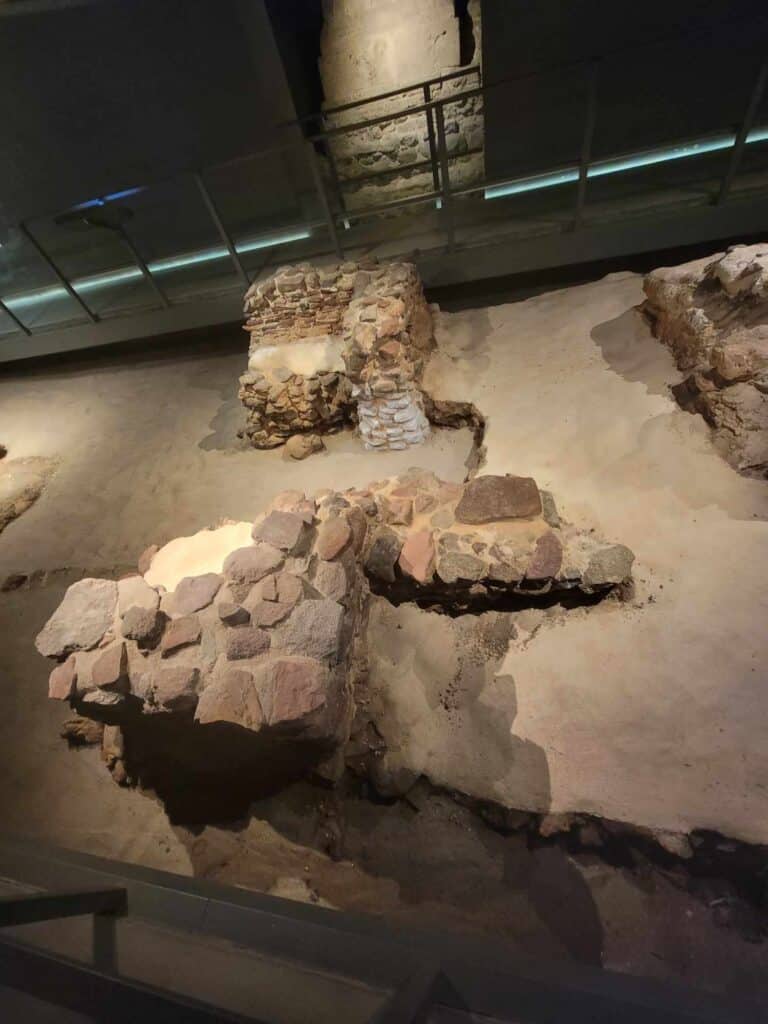
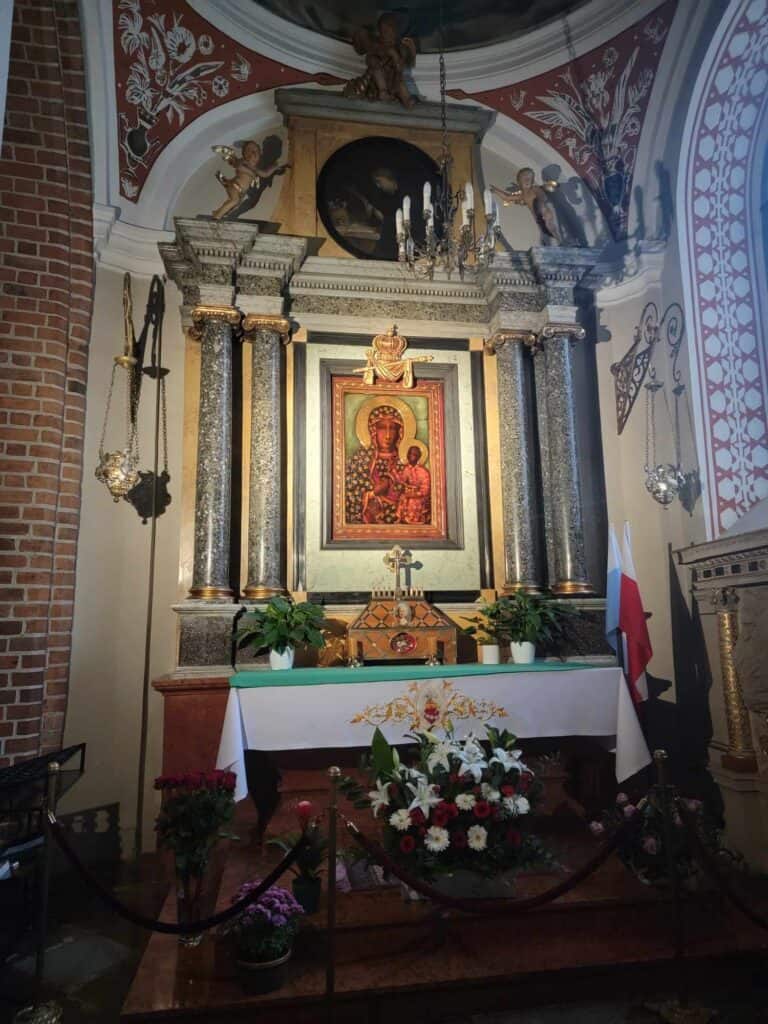
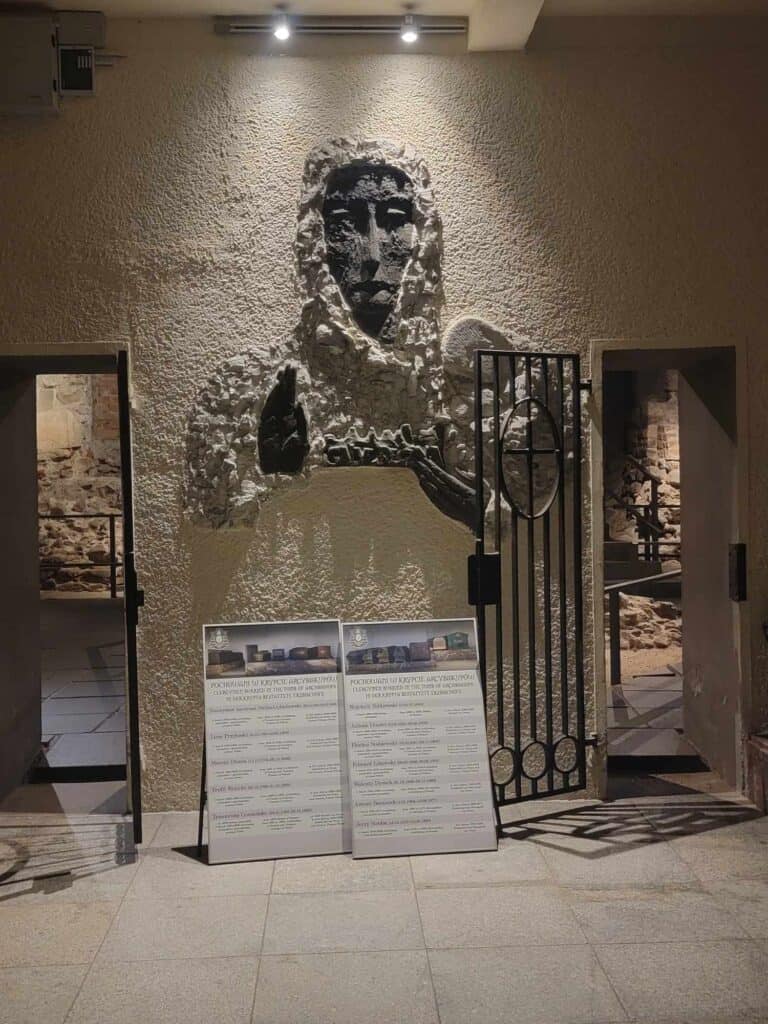
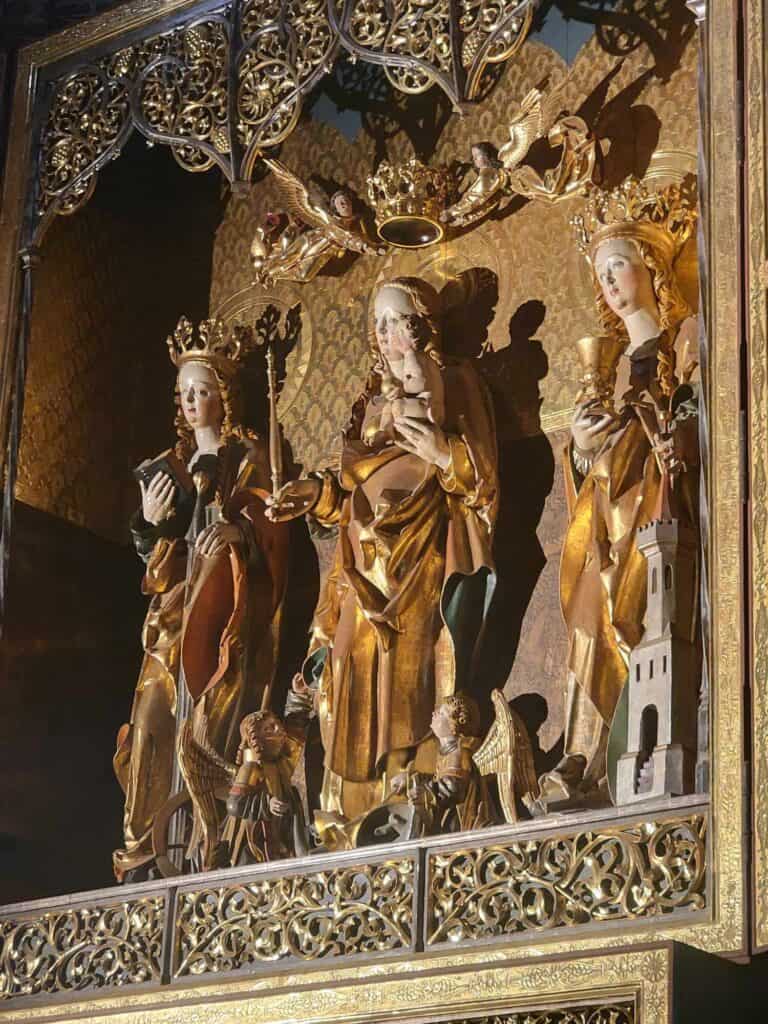
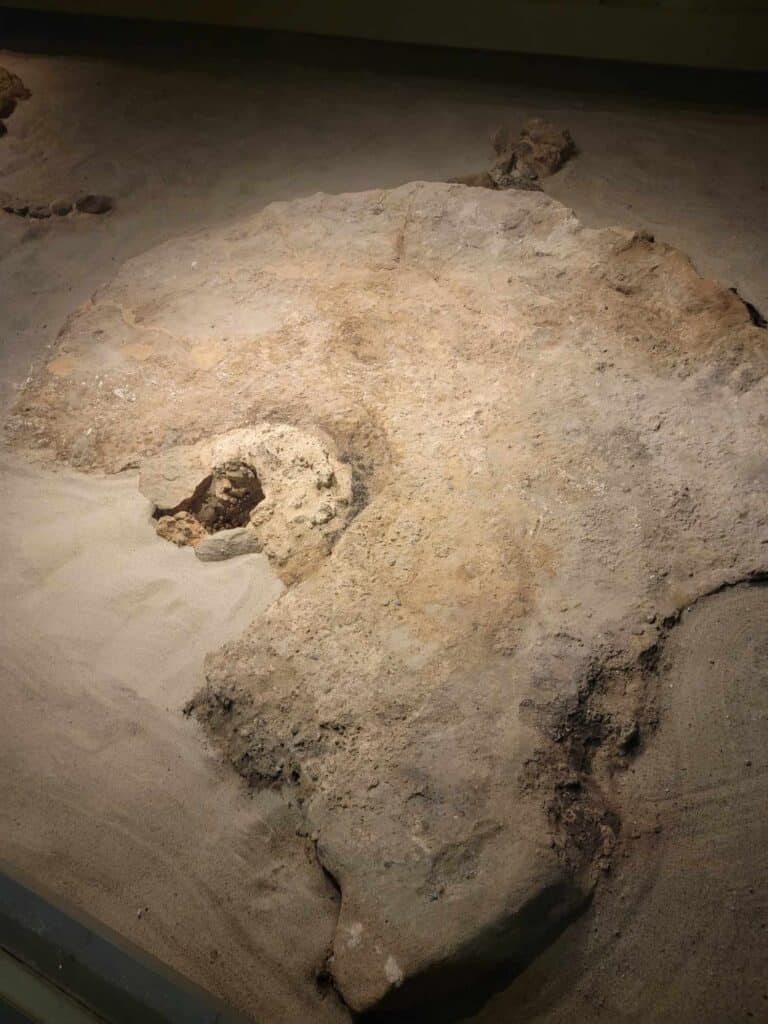
The Cathedral
The Poznań Cathedral, [Basilica of St. Peter and St. Paul] is the oldest cathedral in Poland, dating originally from the second half of the 10th century! Situated on the island of Ostrów Tumski near the city center, it boasts an impressive and unmistakable brick facade.
Its tumultuous history involved destruction by the Bohemian duke Bretislav in the 1030s, then a Gothic rebuild in the 14-1500s, devastating fires in the 1600s and 1700s, and in 1945 during the final months of World War II. The final rebuilding of the cathedral featured the Gothic style, and used some Medieval features which were revealed during the fire for guidance. You can also still see remains of Romanesque architecture in the southern tower.
The Crypt
But the real architectural hidden gem lies hidden in the basements and crypt of the cathedral. Here you can see the remains of the original altar, baptismal font, and portions of the foundation. It costs a couple dollars to visit, and you pay at a little desk by the stairway going down. It’s well worth it to see this incredible archaeological site which still stands in its original location.
Several notable figures from Polish history have tombs inside the cathedral. You’ll see Poland’s first historical ruler, Mieszko I (who may have even been baptized in the cathedral in 966AD) and his son Boleslaw the Brave. It truly is an incredible site where you can stand surrounded by the very beginnings of Polish history.
Admission to the cathedral is 6 złoty which is about $1.50. The cathedral is open from 9am-4pm, and closed to tourists on Sunday.
The official website is HERE in Polish.
2. Archdioses Museum
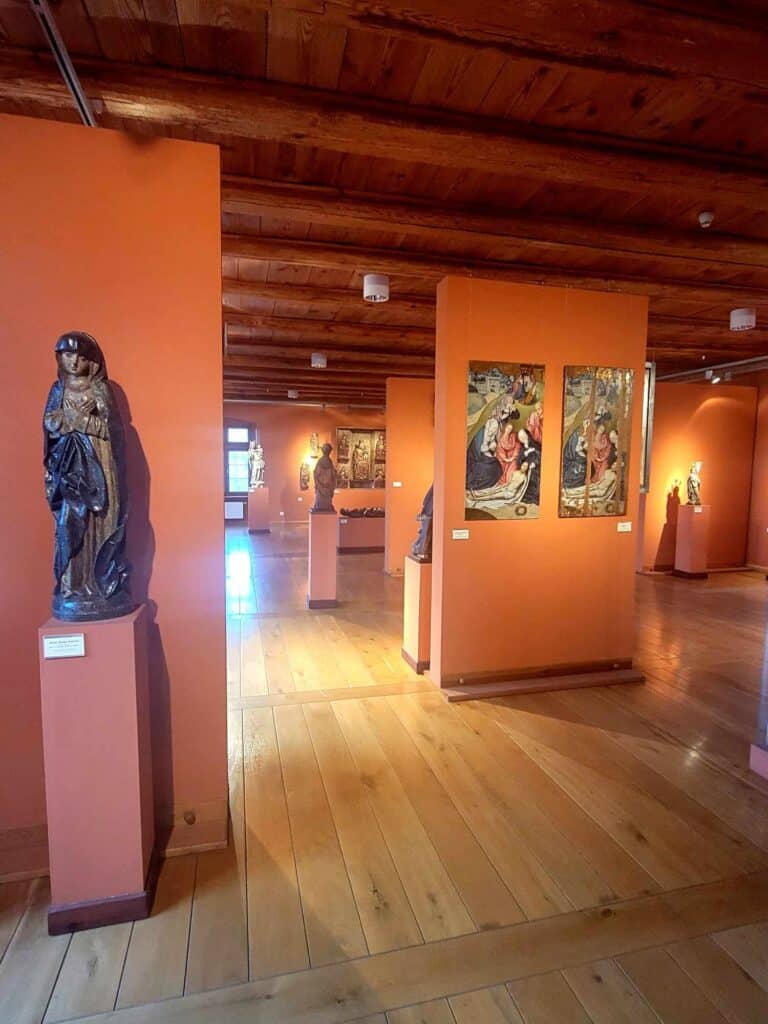
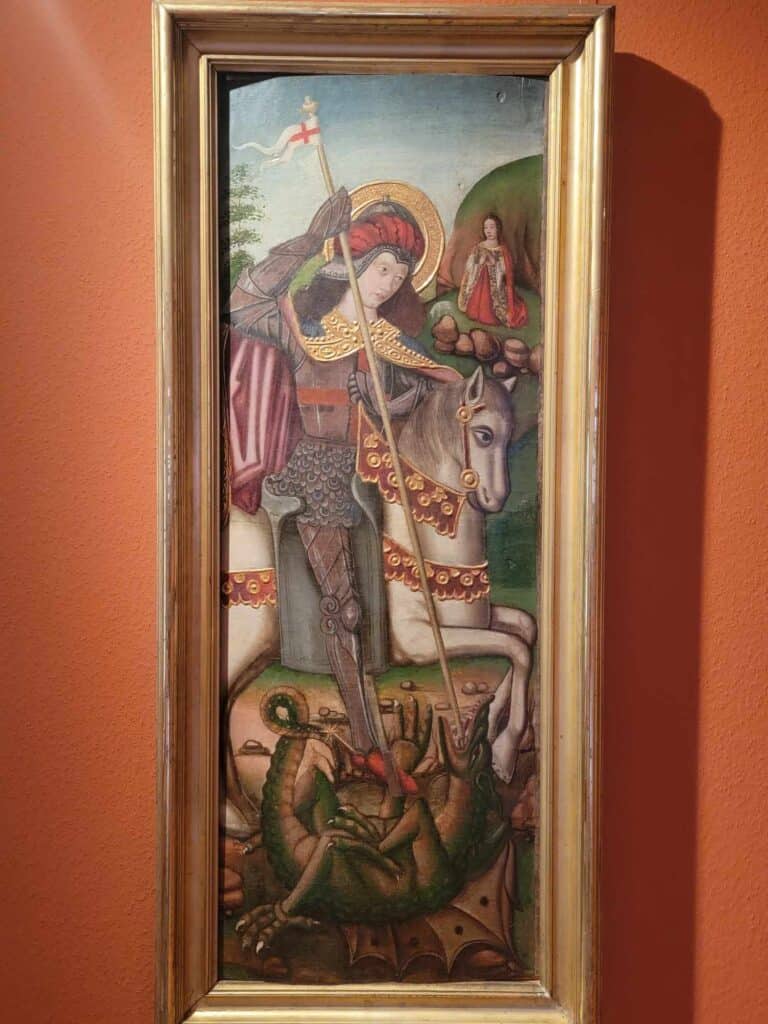
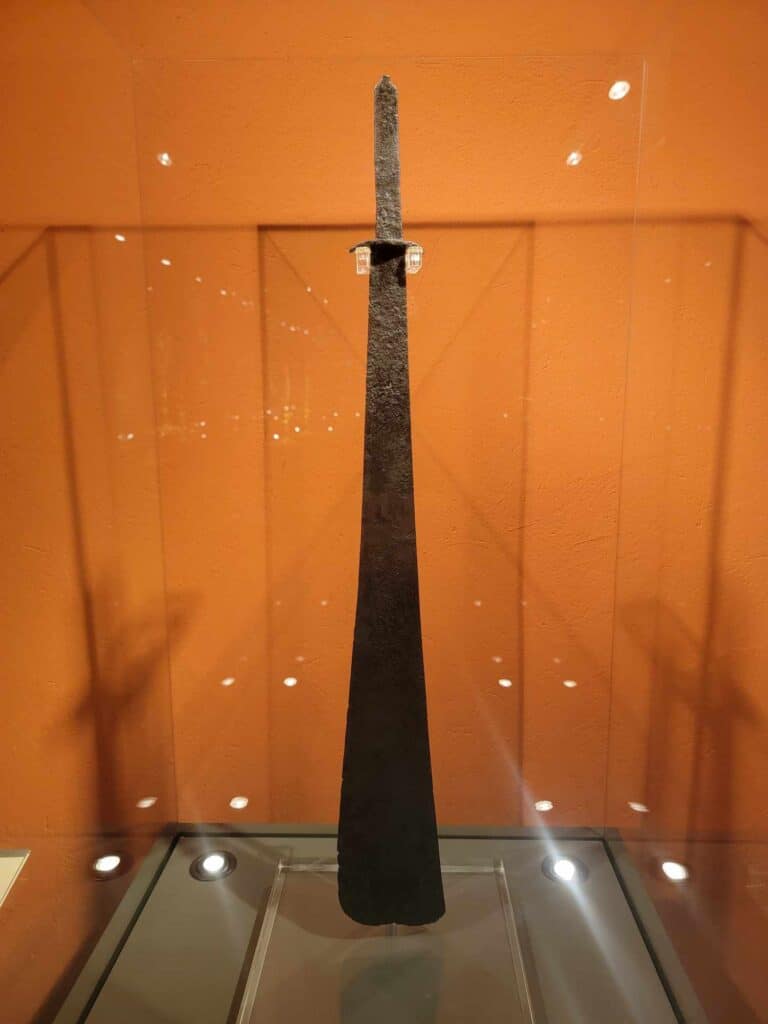
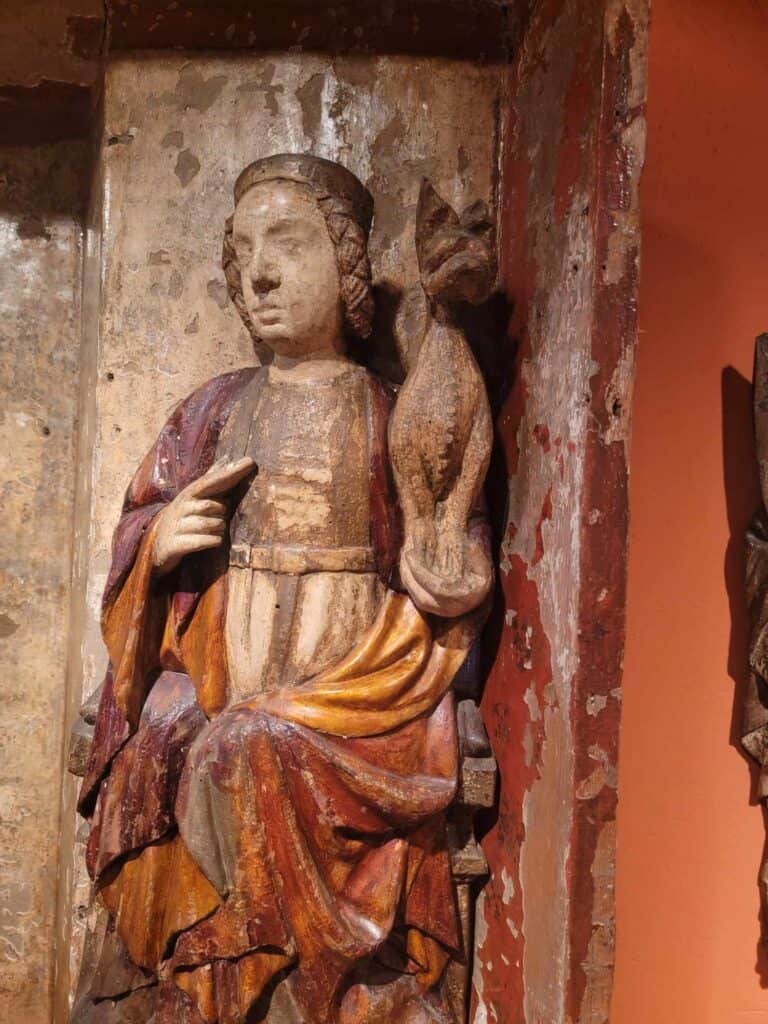


The museum is located in the old Lubrański Academy building right near the cathedral. It once housed Bishop Jan Lubrański’s institute of higher learning. The space has a sunny little courtyard, and the building retains much of its original charm. In addition to revolving temporary exhibits, the museum houses a downright impressive collection of religious art and artifacts, most dating from the Middle Ages.
Several bishop’s robes show intricate textile work from as early as the 1400s, rings, staffs, and the sword of Saint Peter, the oldest Polish relic, which some claim to be the sword that the disciple Peter used to cut off the ear of a servant who participated in the arrest of Jesus. It has a controversial pedigree, though, with some claiming it to be a Medieval copy of the original sword. But either way it’s interesting to see and an important relic in the history of Poland.
Two floors showcase magnificent religious paintings and an astounding collection of wooden statues, some amazingly preserved, from Medieval times. Also on display are the huge iron handles in the shape of lions’ heads which came from the old doors of the cathedral.
Overall this museum impressed me and I happily spent a couple hours there perusing both the permanent collection and a temporary exhibit. Mark it down as absolutely worth your time, especially if you are a fan of Medieval art!
Price of admission is 20 zł, (about $5.00)
Open Tues-Fri 11:00 – 17:00, Sat 11:00 – 16:00, Sun 11:00 – 15:00, Closed Monday
3 & 4. Goat Clock/Old Market Square
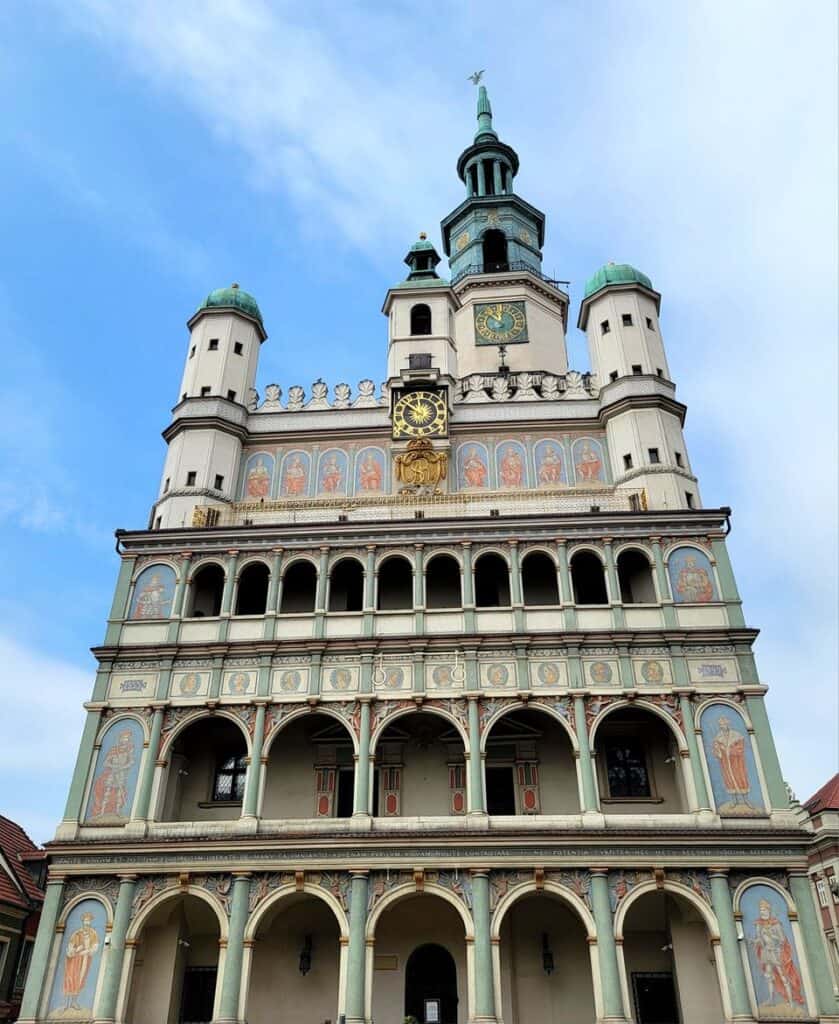
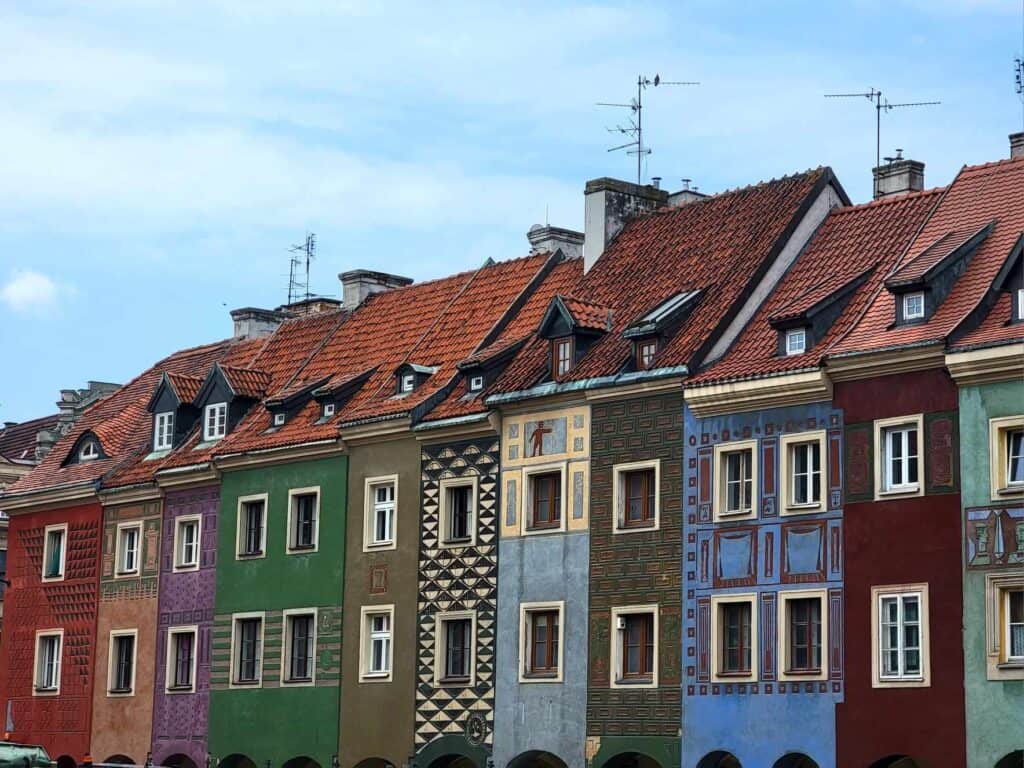
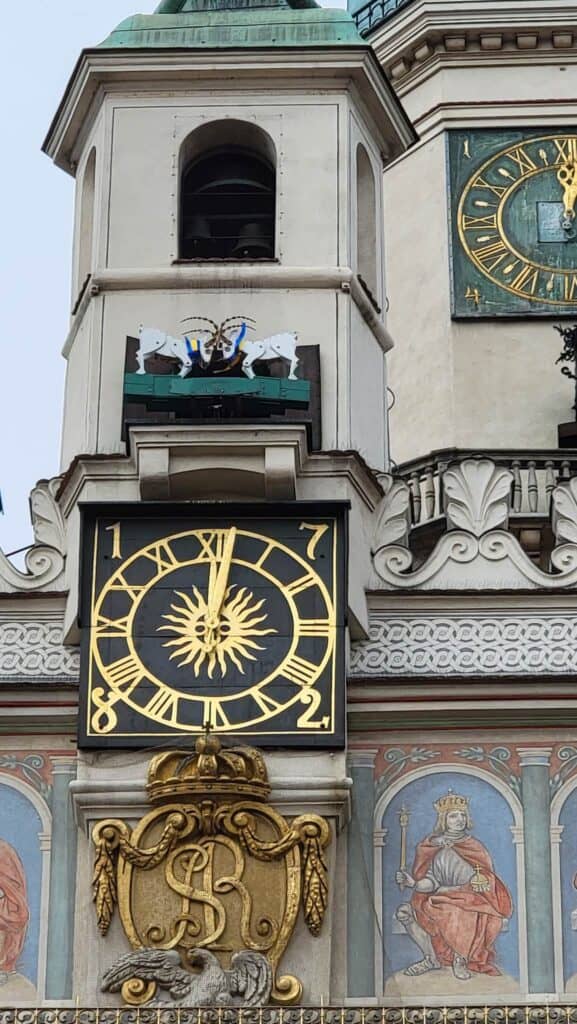
Of all the things to do in Poznan, the goat clock is the quintessential Poznań experience, and it won’t cost you a single zloty! Every day at noon, two wooden doors on the old town hall, just above the clock, open. Out pop two white goats who rotate to face each other and butt heads in a delightful display that leaves a little crowd in the square craning their necks to see it. This epic goat battle portrays a humorous event from history that saw two actual live goats butting heads up in the clock tower for all to see.
Today you can enjoy the show from one of several outdoor cafés on the old market square, or just make sure you’re walking by at noon and catch the unforgettable sight! You’ll see why the goat theme is rampant in Poznań!
You can read the whole fascinating story of the goat clock HERE.
And don’t forget to go goat-spotting all around Poznań where you’ll see the friendly goats pop up in souvenir shops, the names of local businesses, statues, graffiti, and even the wallpaper in the Poznań Sheraton!
Sponsored content: This section contains affiliate links
5. Town Hall Museum
On my third trip to Poznan, the day I’d been waiting for had arrived! All the construction work in the Stary Rynek (The Old Market Square) was complete, which meant that the Town Hall and its museum had finally opened its doors to the public! It’s a natural stop right before or after checking out the goat clock!
I happened to be there on a day with free admission, but if you don’t have my luck be sure to bring cash because apparently the credit card machines are finicky.
The museum is really great, and houses lots of original artifacts from Poznan, many of which were excavated right in the square while renovations were happening! The building itself also has a story to tell. The first room you come to is small, with a window overlooking a stone-walled room which used to be the torture chamber. The overlook is where the magistrates watched the interrogation of prisoners, and a scribe wrote their confessions. Not what I was expecting at all. And believe it or not, torture was not banned until 1776. The Middle Ages were rough times.
You’ll also find an interesting collection of 19th and 20th century household goods, textiles, and other items of every day life to give you an idea of what it was like to live in Poznan during that time. The collection includes a huge red star, formerly mounted on the huge obelisk in Citadel Park during Soviet occupation. And you’ll see a pair of retired Town Hall goats from the goat clock from the early 1900s.
Allow about an hour. The museum is fairly small, but the items and the building are really fascinating, and there’s a slideshow of old photos and images that kept me for at least 20 minutes. Also, have your Google Translate app at the ready.
Admission to the museum is about $5 for adults and about $0.25 for children. Call ahead to make sure the museum is open. Hours of operation have not been updated on the website.
6. Croissant Museum [Rogalowe Muzeum Poznanian]
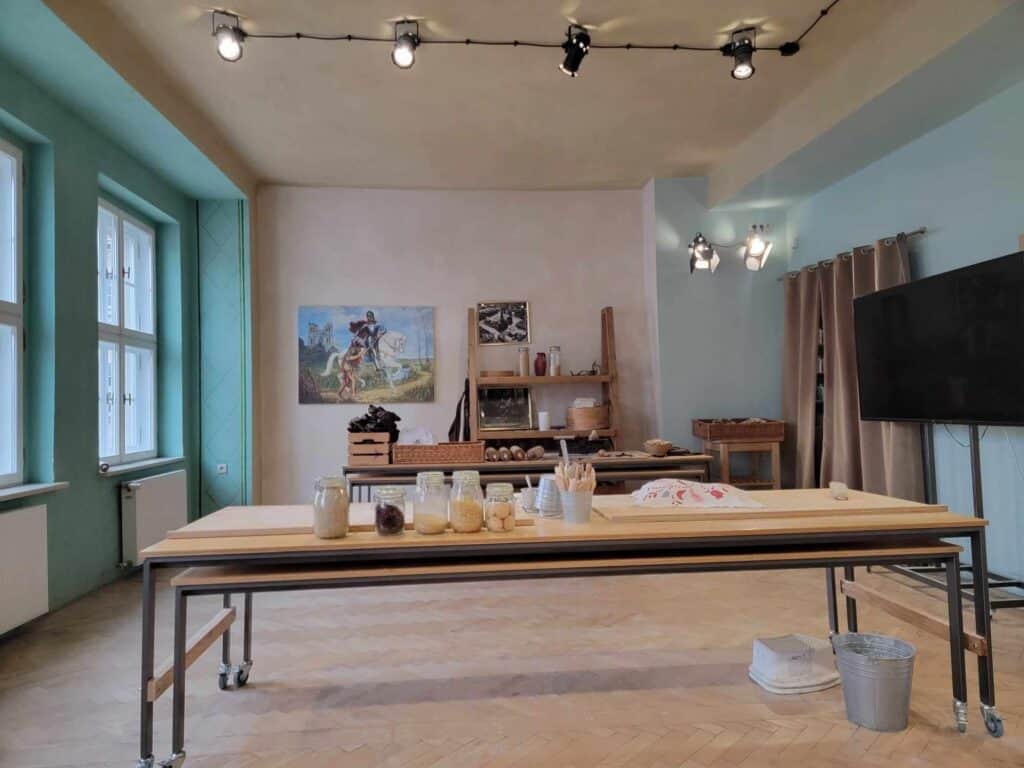
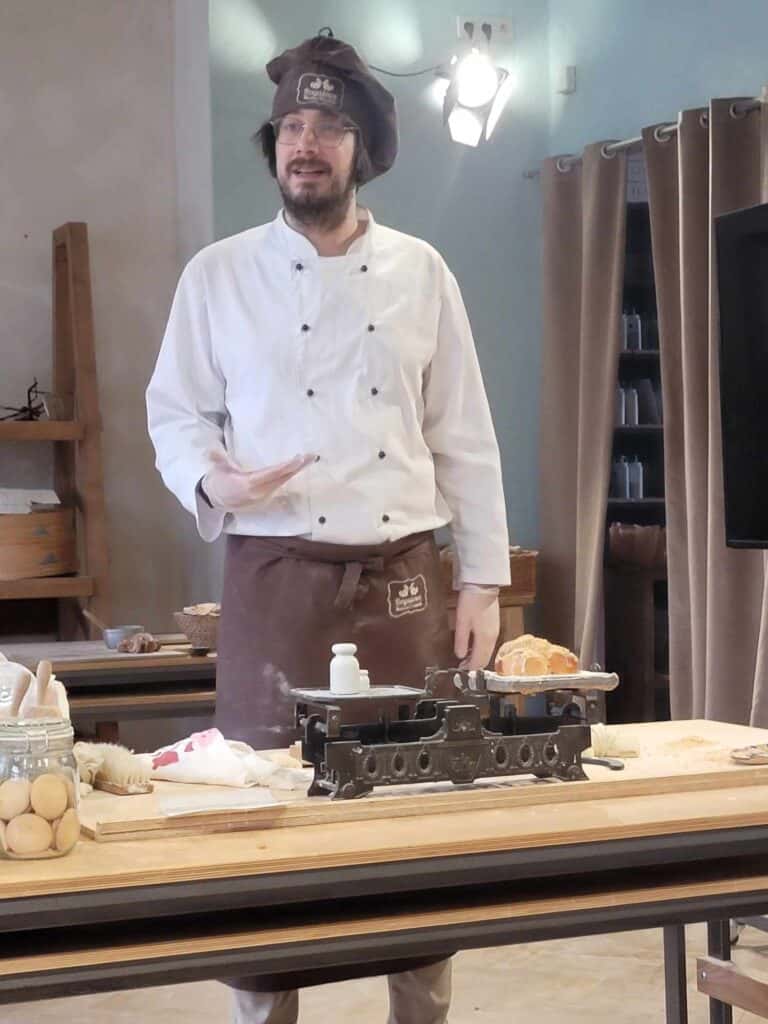
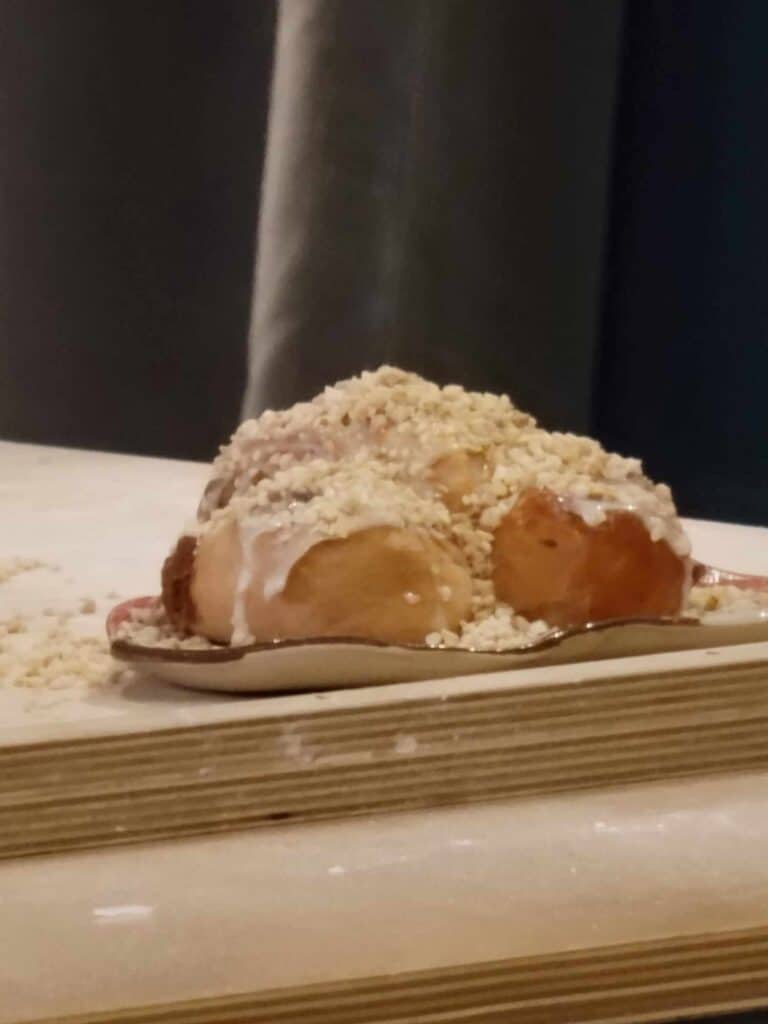
In the old Renaissance house directly across from the Town Hall and goat clock in the square you’ll find a unique hands-on, only-in-Poznan culinary experience. You can learn everything there is to know about the signature pastry of Poznan, the Saint Martin Croissant.
You’ll learn about the recipe and ingredients, and volunteers can assist in constructing this amazing treat by kneading and punching dough, and learning the technique of filling and rolling. There’s also a short film about the history of its origin, and the bakers/guides tell stories about the legend of St. Martin and how they relate to the delectable sweet treat.
The best part is that everyone gets a little bag of sample croissant to take with them, and a certificate proclaiming you an apprentice St. Martin croissant baker.
English presentations are available at 2:00pm.
You can buy tickets right from the Musem HERE (about $10.00) or fancy it up and take a comprehensive 3-hour private tour of the Old Town, full of history and stories, which includes a visit to the Croissant Museum as part of your day for about $120 HERE.
7. Potato Museum [Poznańskie Muzeum Pyry]
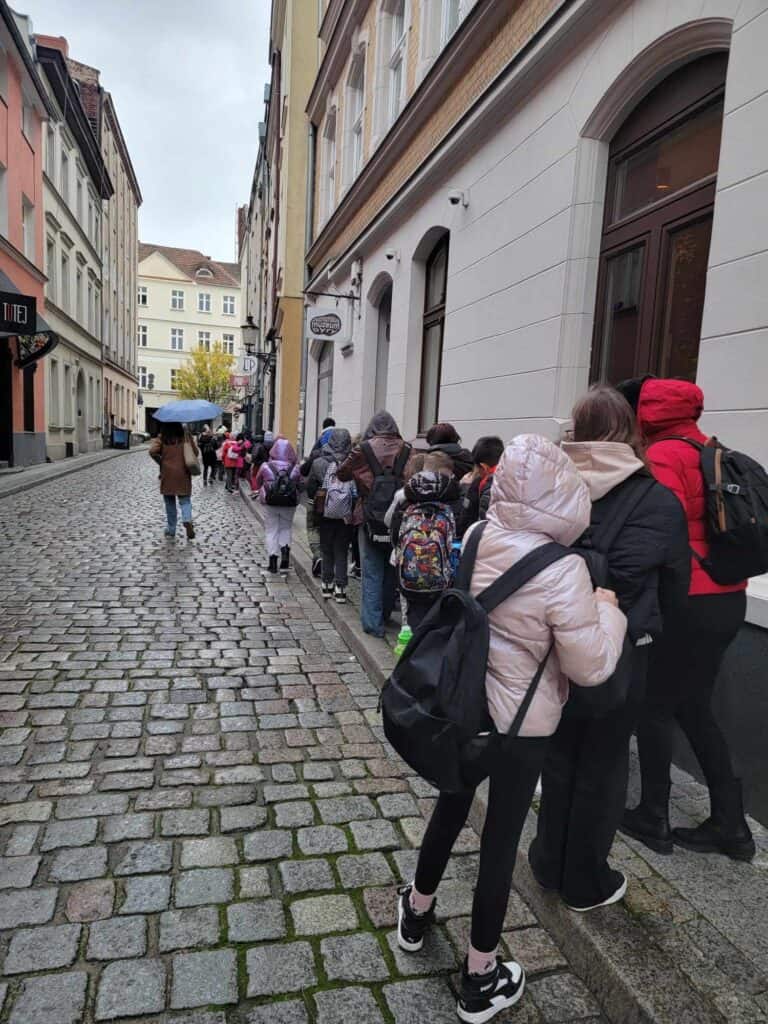
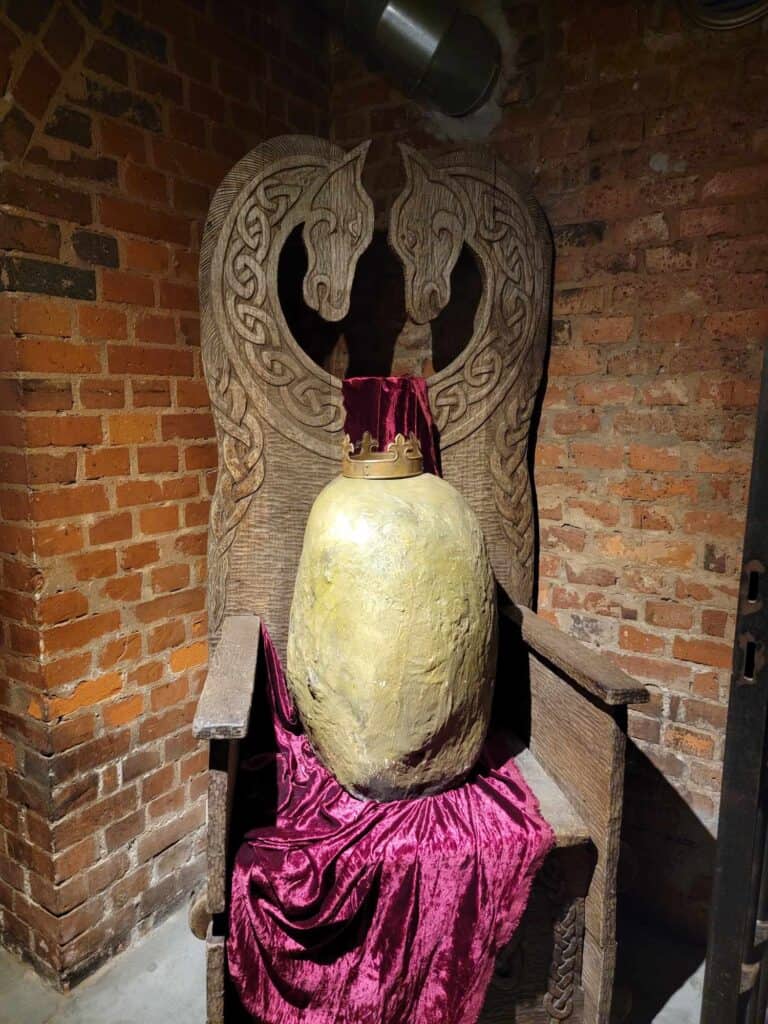
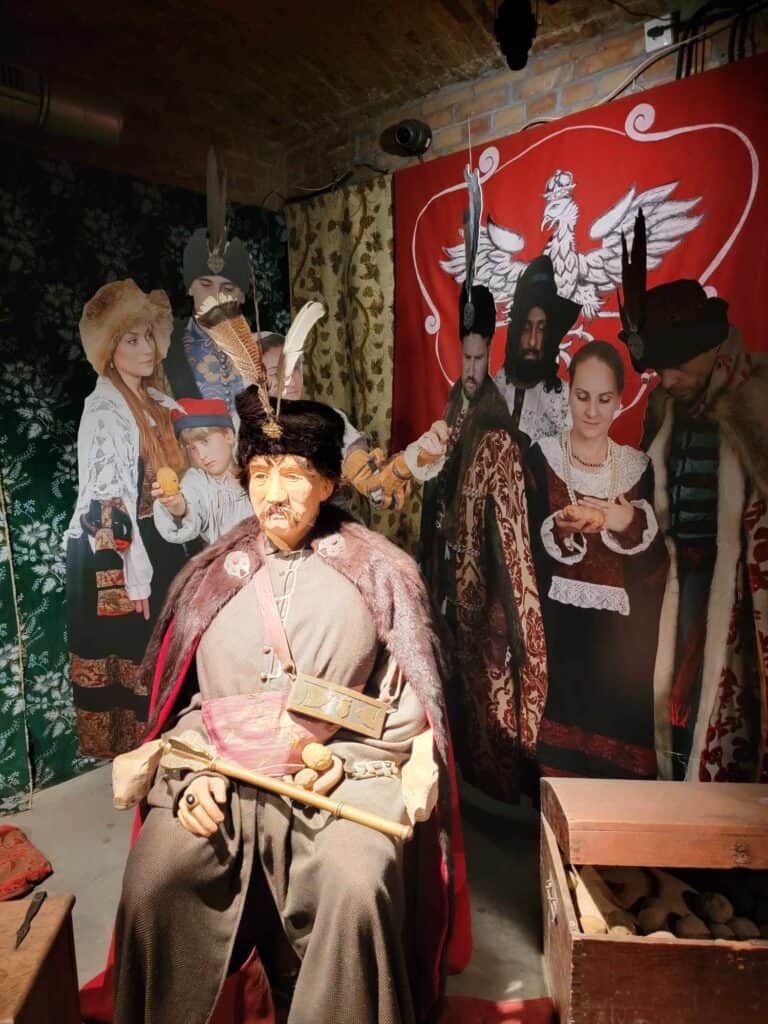
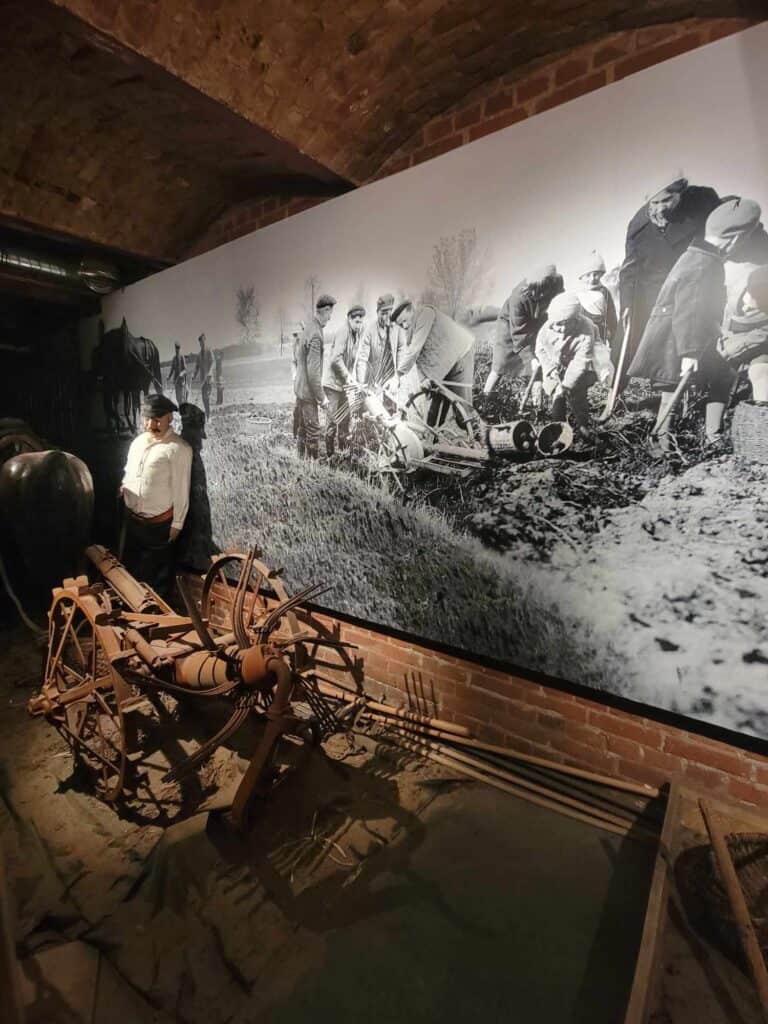
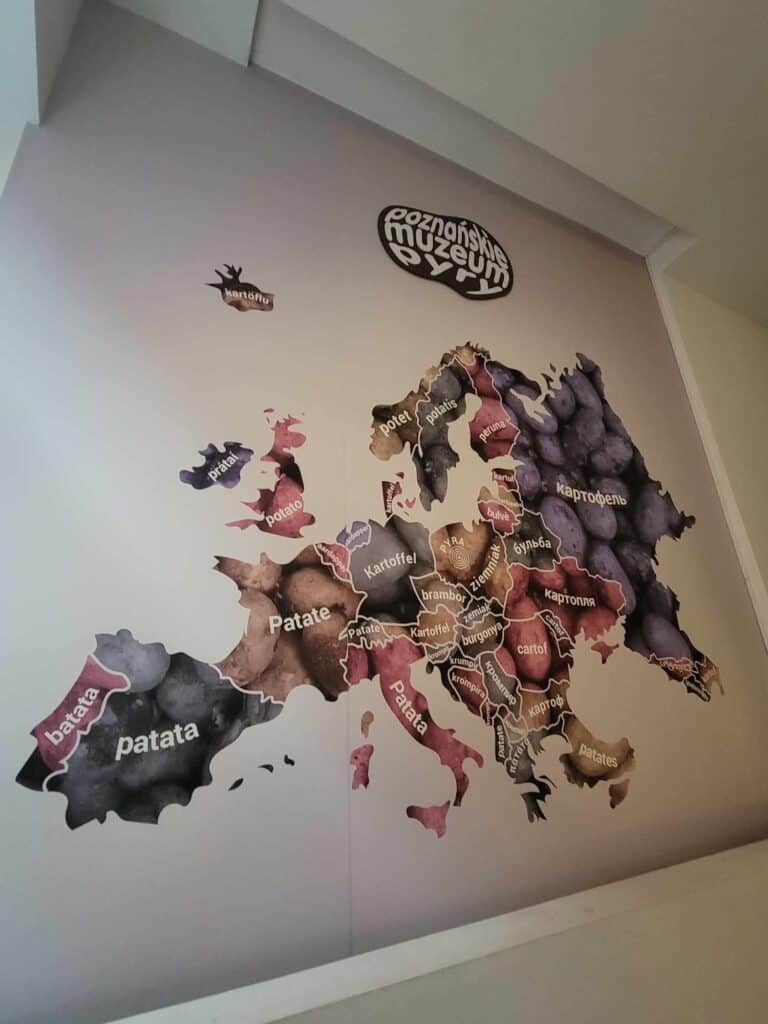
The Potato Museum is one of the most fun and quirky things to do in Poznan. It is another experiential museum, and a fantastic historical overview of Poznań, and the potato. Poznań is known as Potato City, and the locals call them “Pyra” after Peru, their origin. Poland consumes more potatoes per capita than any other country, and used to be the largest potato producer, until China took its place. Potatoes feature so heavily in Polish life that there are no less than 120 words for potato in Polish.
As we entered, the comforting aroma of baked potato wafted around us, because as part of the potato experience, you bake and season your own potato! Your potato will be waiting for you and ready to eat when the tour concludes.
We heard many potato stories and lore, and heard details of Poznań’s history. Potatoes, along with cabbage and pork were the staples of a poor Polish diet, our guide explained. He remembered fondly having his first banana when he was 10 years old in 1991. Until then, when communism fell, bananas were only for the wealthy.
There is a small but cute gift table that sells an assortment of potato-themed swag like keychains and magnets.
Tours occur on the hour from 10.00 am to 6.00 pm (last admission at 5.00 pm), from Tuesday till Sunday. Tickets cost 26 zł adults (about $5.50)
Reservations are required, and you can book your tour HERE. Be sure to note when tours occur in English.
8. Fort VII – Wielkopolska Martyrs Museum
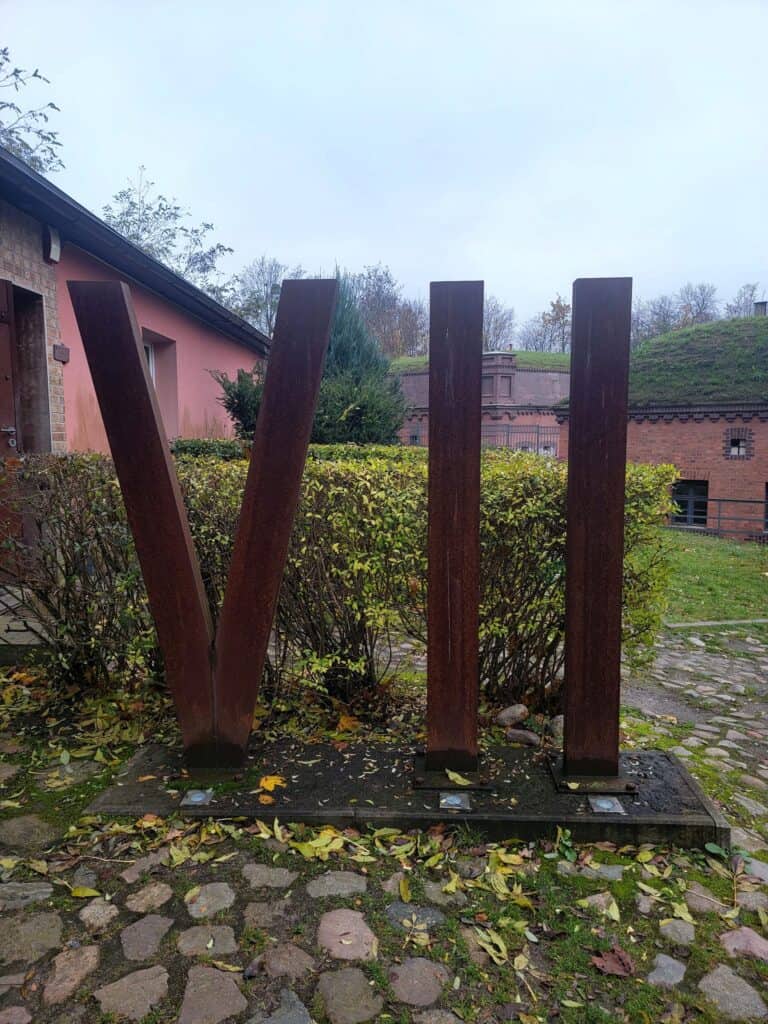
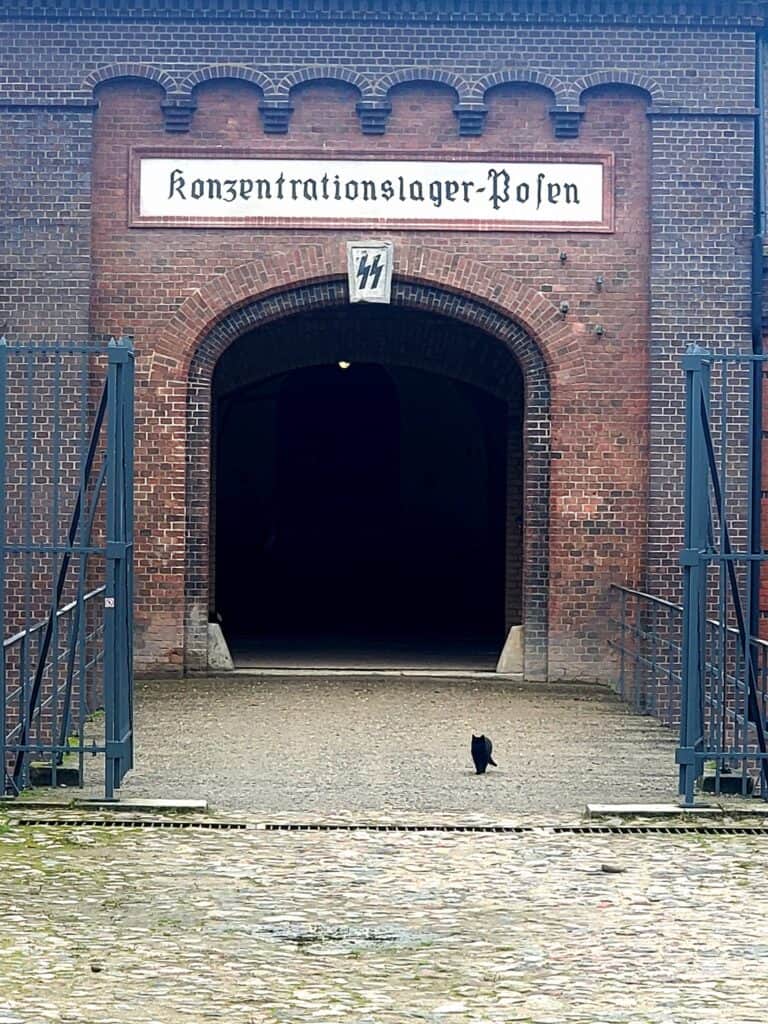
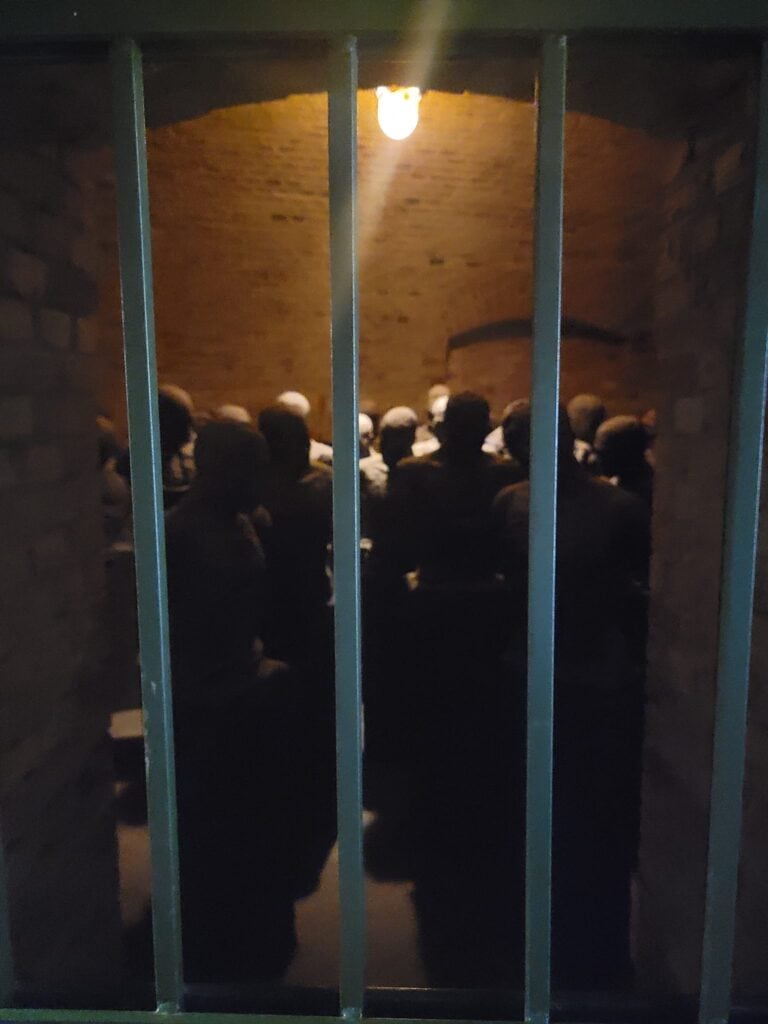
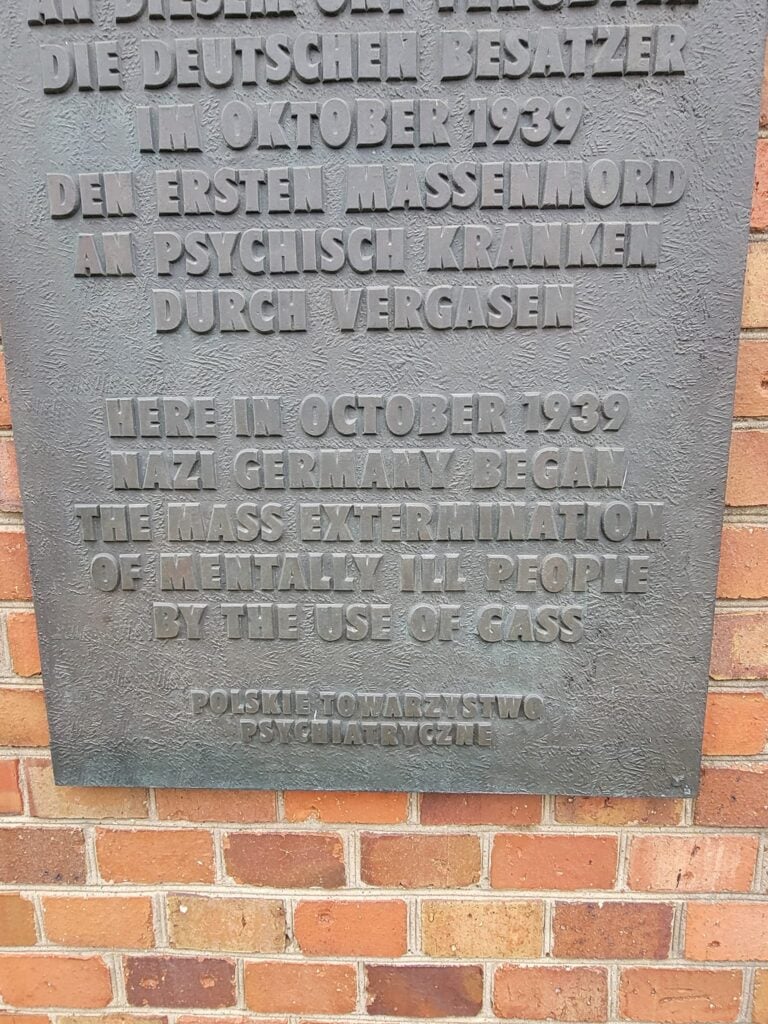
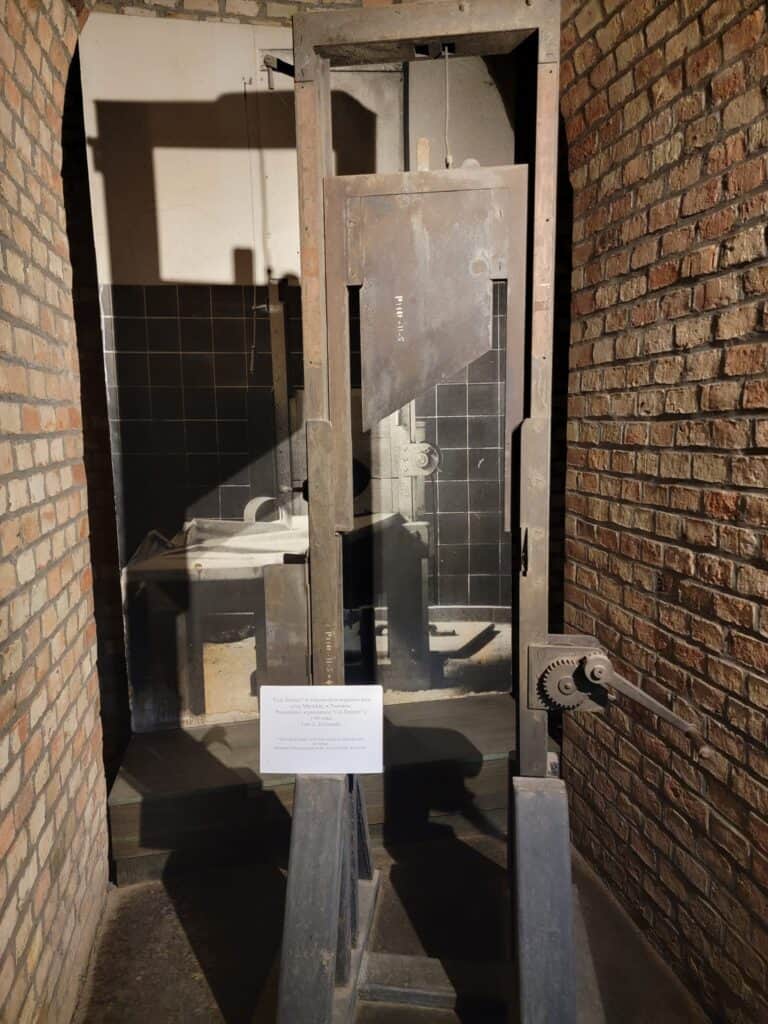
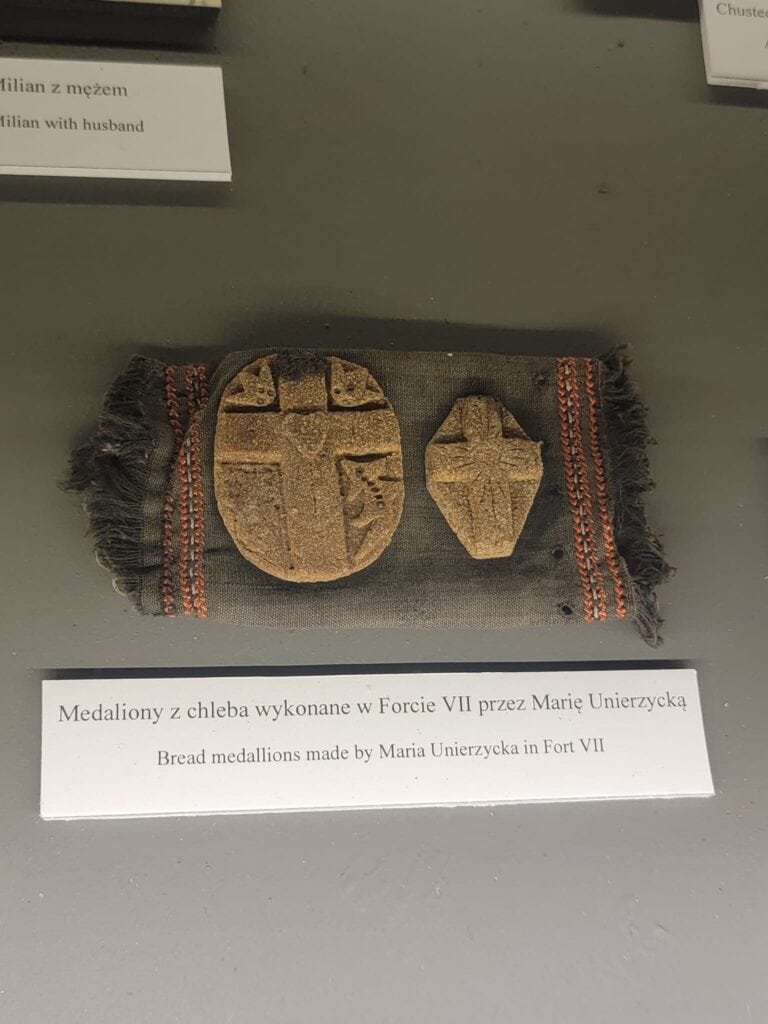
The History
Fort VII in Poznan, originally a 19th century Prussian fort, was the site of the Nazis’ first death camp, where the method of using gas for mass murder was honed. It served as a German prison camp between 1939 and 1944.
The first victims here were the mentally ill and the doctors and nurses who cared for them. Then the academics and intellectuals, the artists and activists, the dissenters, or anyone who might lead an opposition movement. As many as 20,000 Poles were murdered here.
The technology and techniques used here were expanded and exported to other concentration camps on a massive scale until the end of the war to murder 3 million of Poland’s Jewish citizens. The engines of the holocaust were perfected in this place.
The German occupiers took over homes left empty by the dead, and eventually one in three residents in Poznań was German.
A resistance group, including a woman (the only one) who taught at the University and had access to poisons, was formed. The network included 3 waiters in local restaurants who were able to poison and kill several Nazi officers before they were caught.
The Museum
The atmosphere in this place hangs heavy. Mostly underground, the long series of bricked tunnels (Fort VII was originally a Prussian fortress built in the 1870s) had various repurposed cells. There was a bathroom turned “infirmary” which was basically a holding cell where the injured and ill were put to die, and an ammunition bunker turned into a gas chamber which now holds memorials to those killed whose identities are known.
The personal effects of some of the prisoners are displayed including hand-written letters smuggled out of the camp, playing cards, rosaries, embroidery, drawings, and identity papers. Bricks in the walls show scrawled names and dates in pencil. framed with red and white ribbons. Reaching Fort VII is not an easy task, however. It’s found in the western suburbs, so plan on a taxi or Uber.
All physical paper records from Fort VII were destroyed, so many events and victims remain unknown. And none of the perpetrators, except the ones who met their ends at the hands of a Polish waiter were ever brought to justice. It’s a hard visit, but necessary to understand the full scope of the horrors suffered by Poles during the war.
Open Tuesday – Saturday 10am-5pm, Sunday 10am-4pm, closed Mondays.
Admission is 6 zł (About $1.50). Tuesdays are free.
9. Basilica of Our Lady of Perpetual Help, Mary Magdalene and Saint Stanislaus (Fara Church), “The Pink Church”
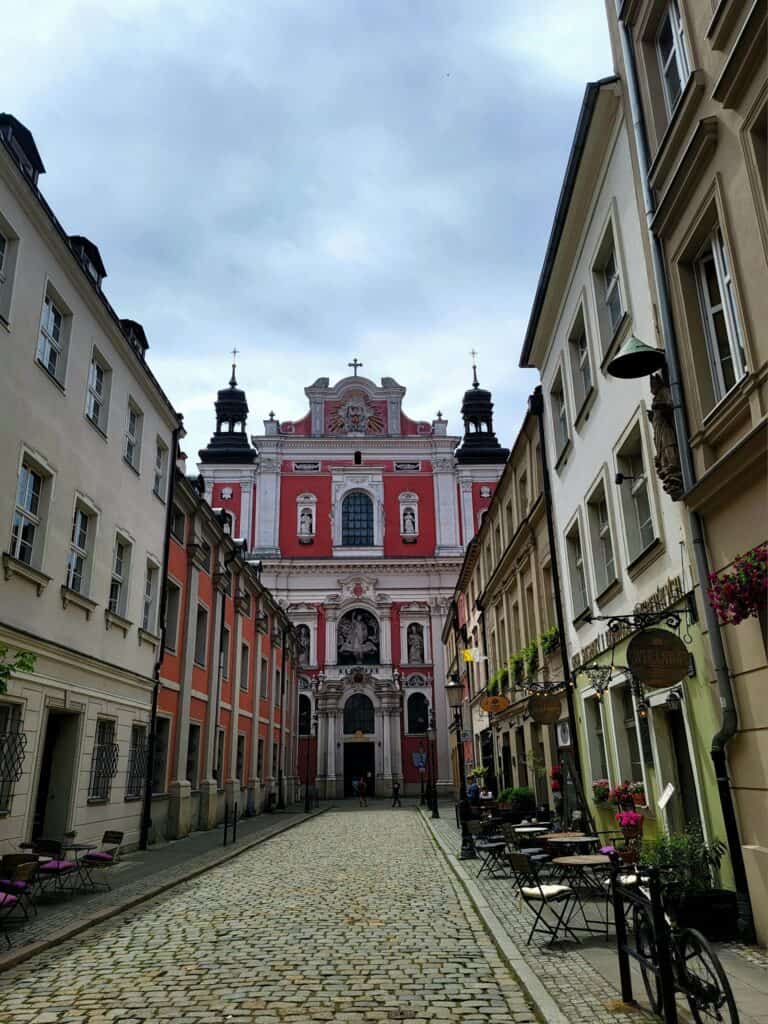
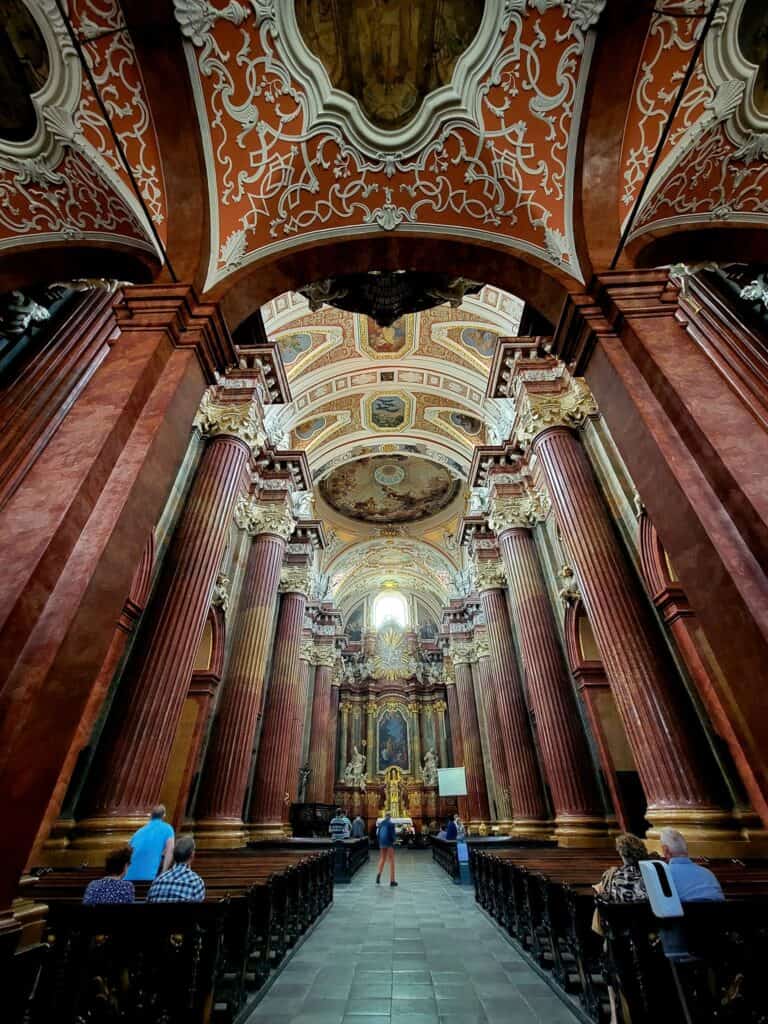
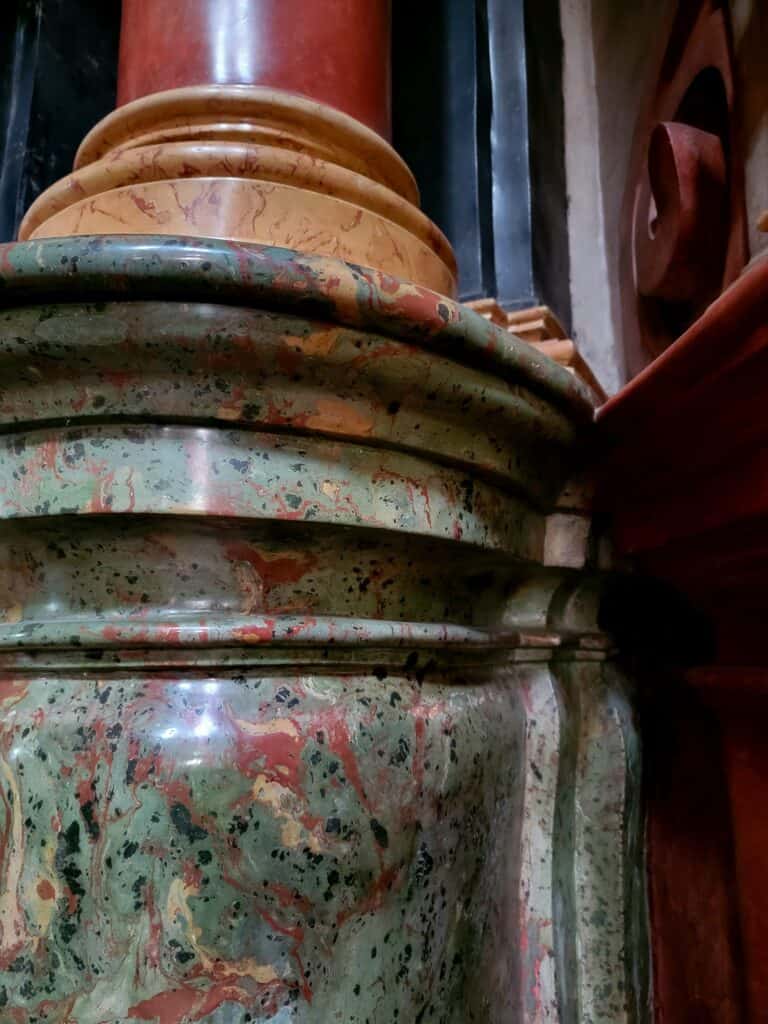
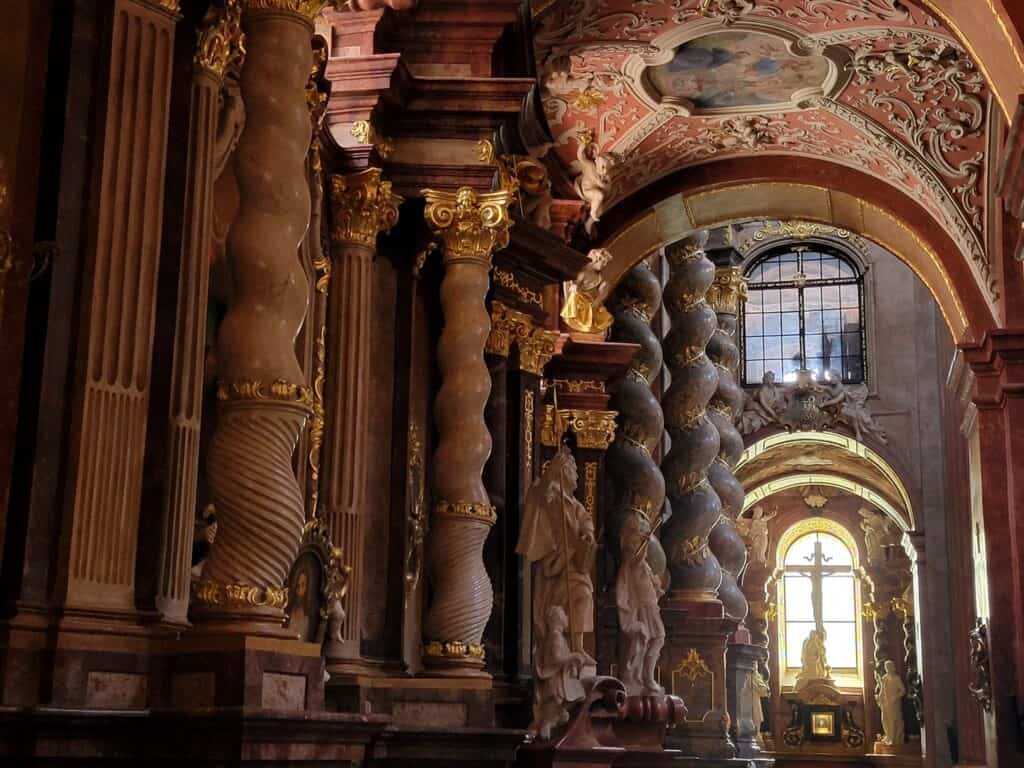
If you’re thinking, “just another church,” think again. The outside has an interesting pink facade, but it’s the inside that will blow your doors off. What awaits you is one of the most amazing examples of Baroque architecture in Europe. You’ll want to not only walk the perimeter to see all the nooks and crannies, the paintings, the amazing marble in a rainbow of colors, the twisted columns, the statuary, you’ll probably need to sit for a moment and just take it all in.
Construction began in 1651 and finished in 1732. The church itself was spared in World War II, but was stripped of its lavish ornamentation by German occupiers. You’d never know it to look at it today. The interior is just stunning from top to bottom.
There’s also a ghost story! According to popular legend, the spirit of a woman who is said to have donated a huge sum of money to purchase the church’s organ in the 1870s walks the balcony by the instrument to protect it. The woman is reported to wear black, and has been reported several times.
Of all the things to do in Poznań, this one is an absolute feast for the eyes and the soul. The church is located just off the Old Market Square, and there is no charge for admission. Allow half an hour to an hour depending on how slow you go. But you’ll really miss out if you skip this one.
Admission is free!
10. St. Anthony of Padua’s Church – The Franciscan Church, “The Yellow Church”
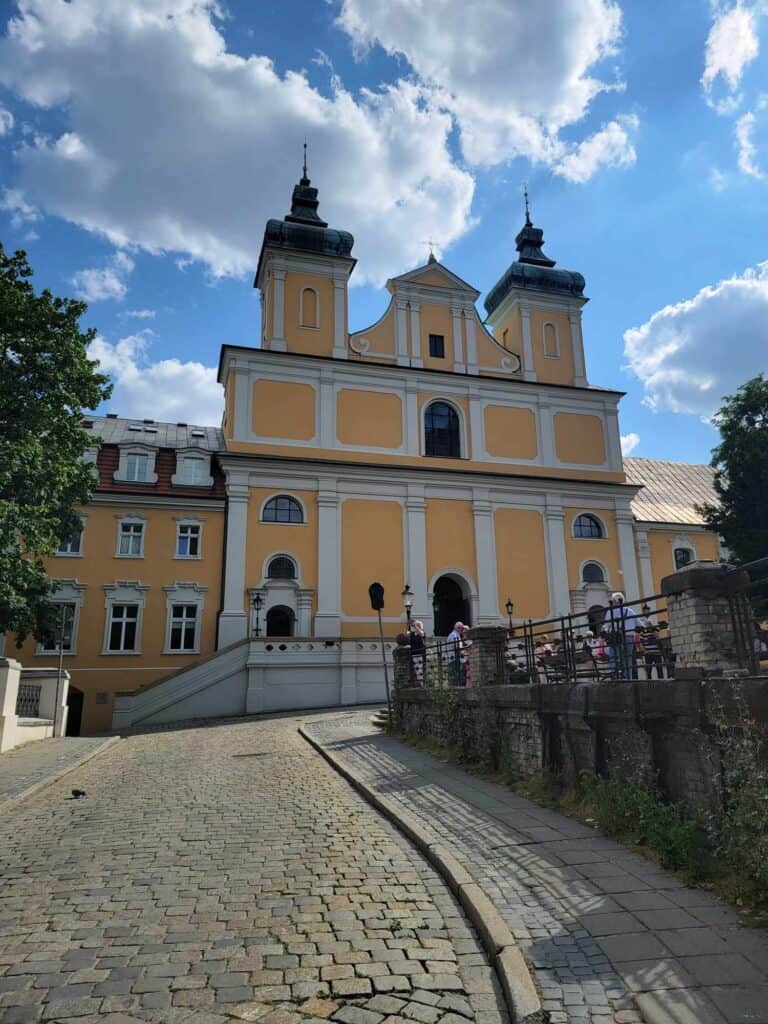
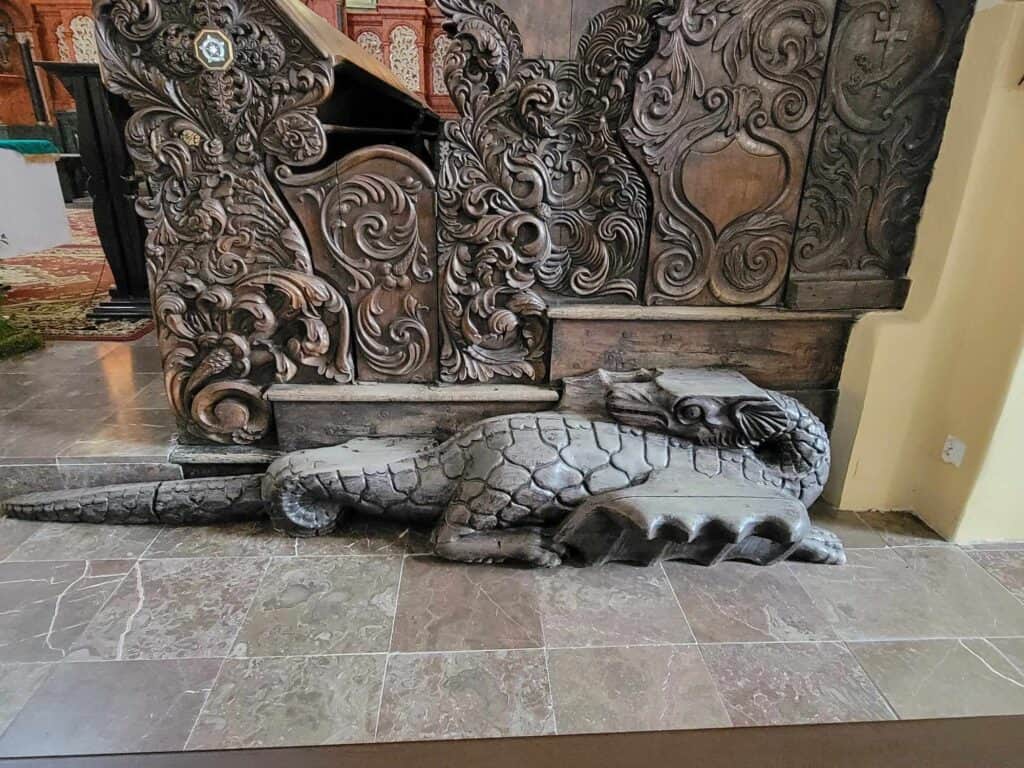
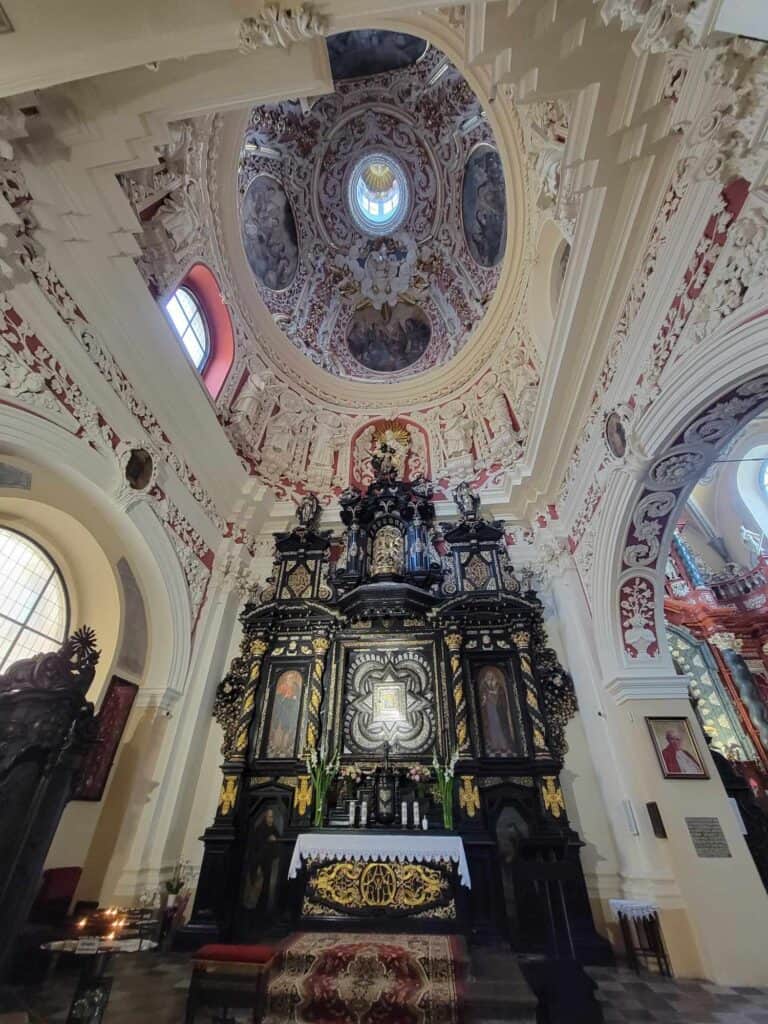
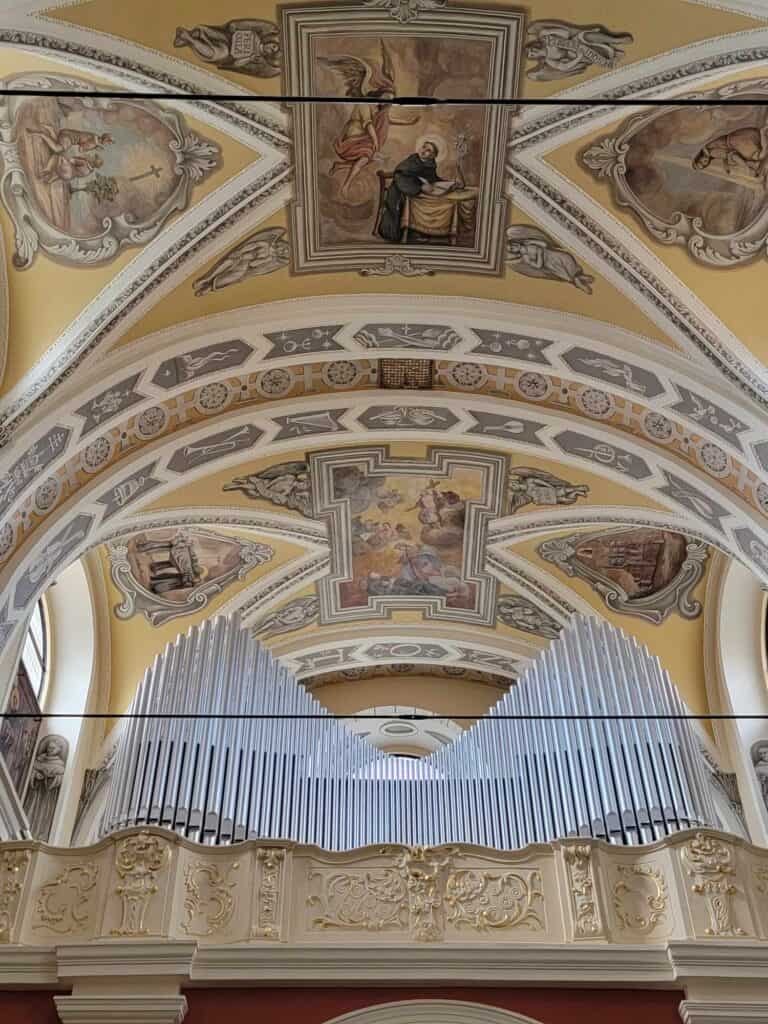
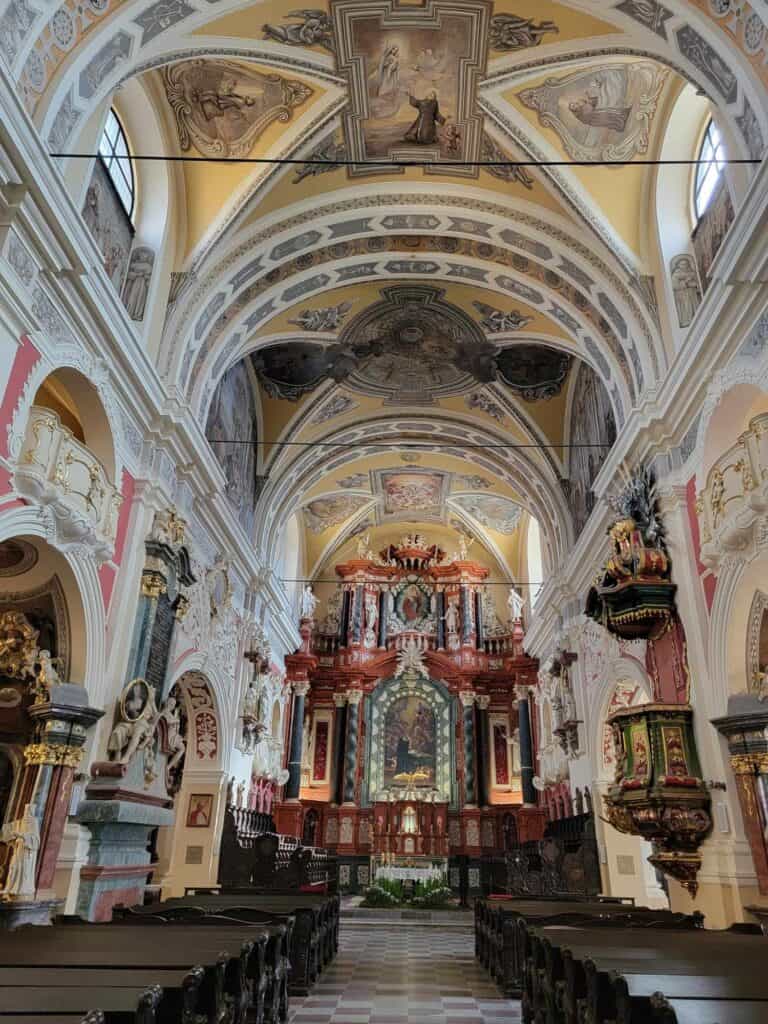
Another beautiful church located relatively close to the Old Town is “The Yellow Church” which has a striking baroque facade, and sits up on a little hill west of the Old Market Square.
The interior has some incredible decorative stucco work, and there are paintings, and elaborate scupted choir stalls and altar.
Construction of this church began in 1674 and was completed by 1757 after reparations of severe damaged caused by a siege of the city in 1704.
Allow about half an hour to 45 minutes for this one. Admission is free!
11. The 1956 Uprising Museum
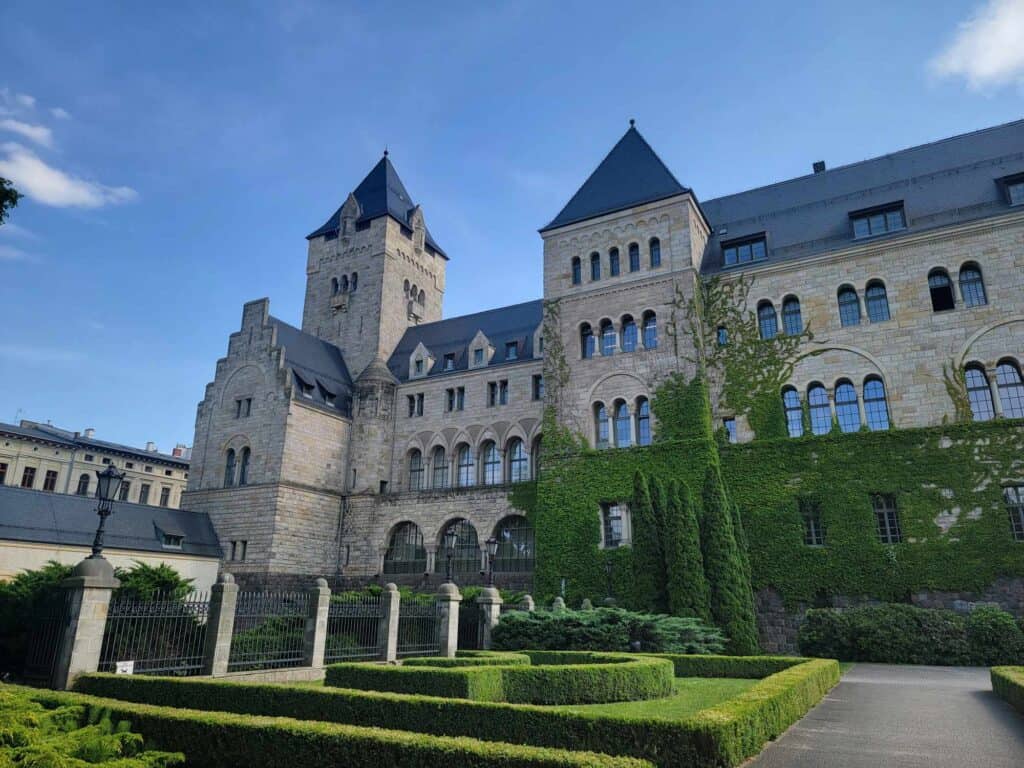
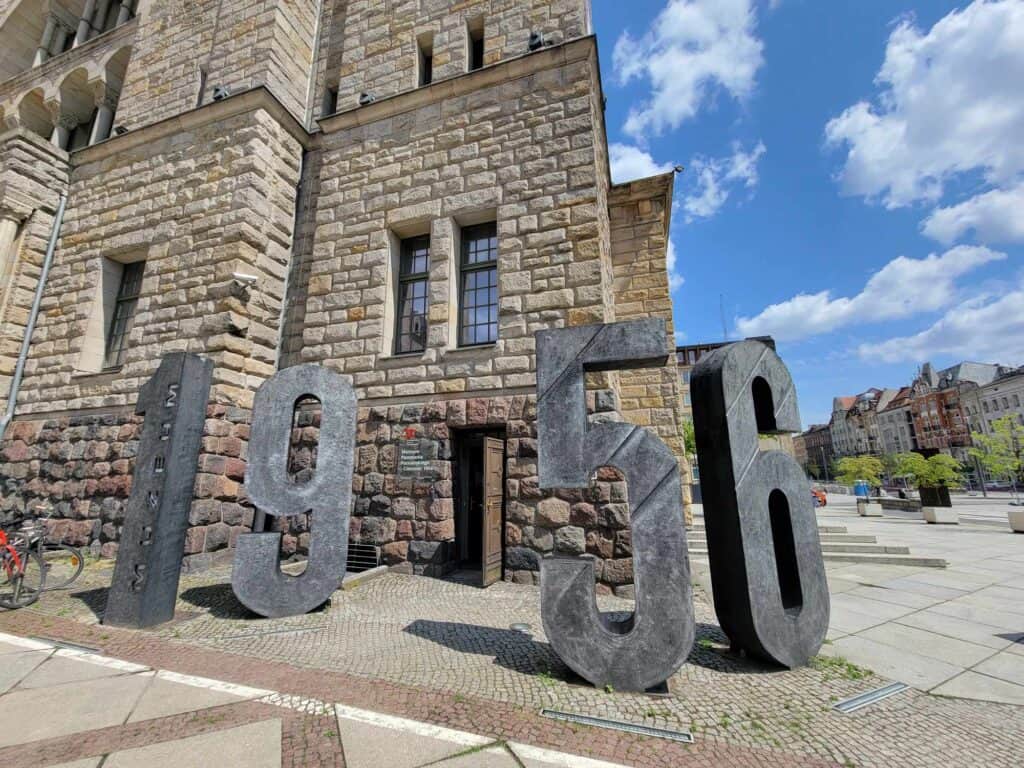
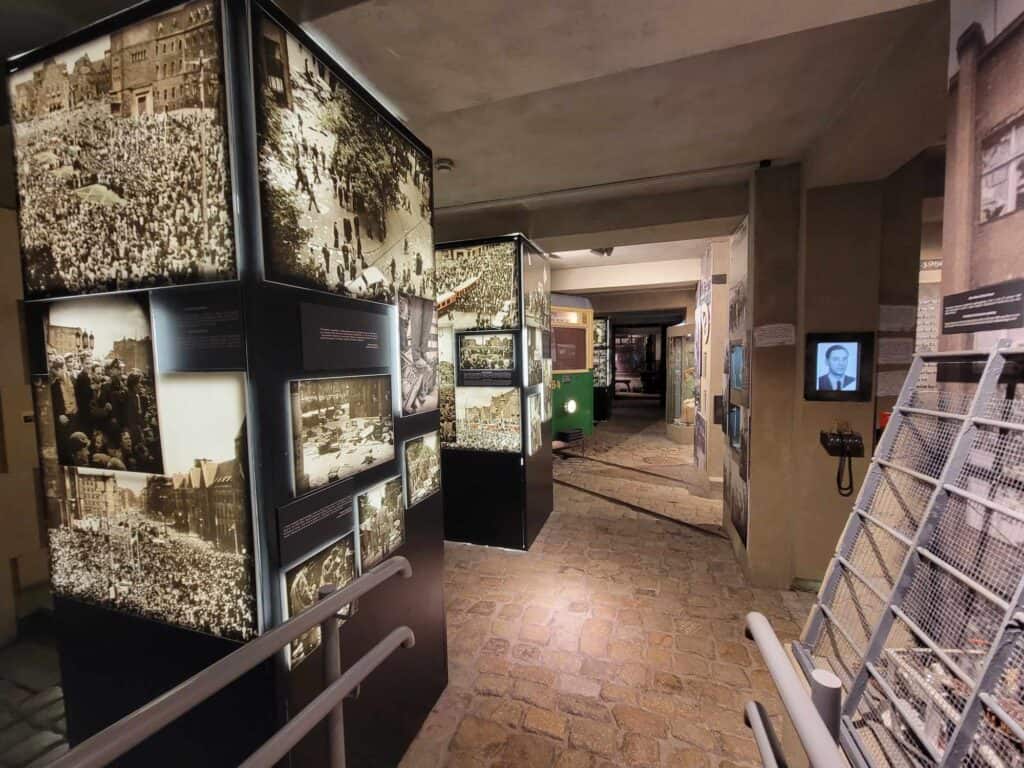
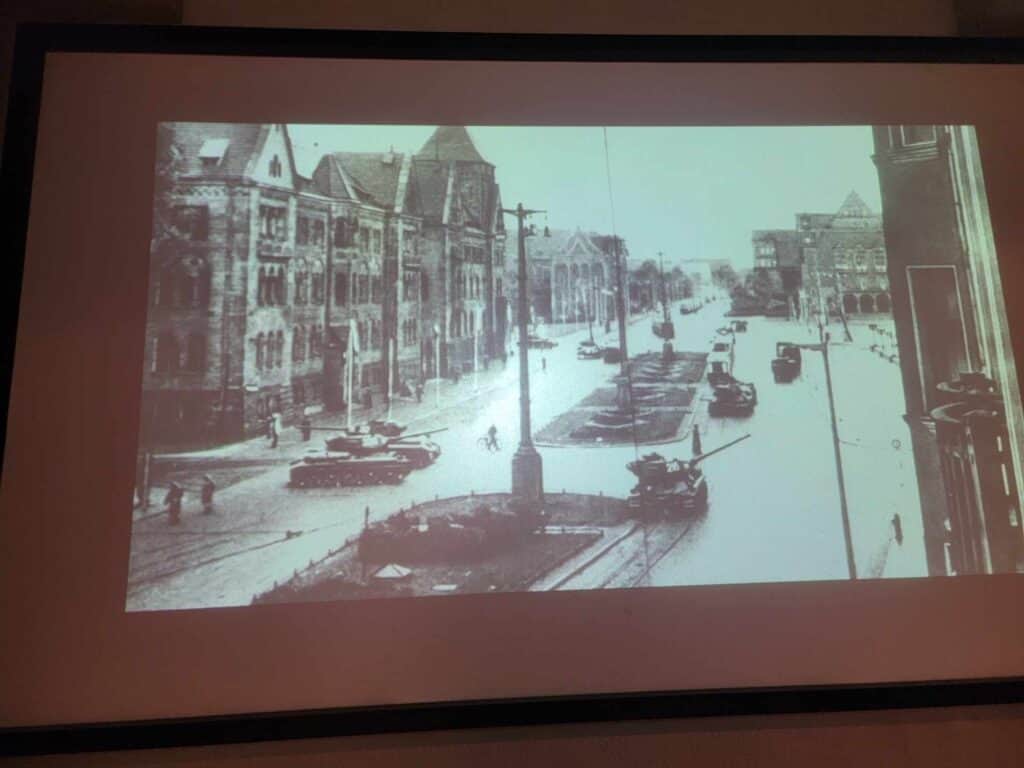
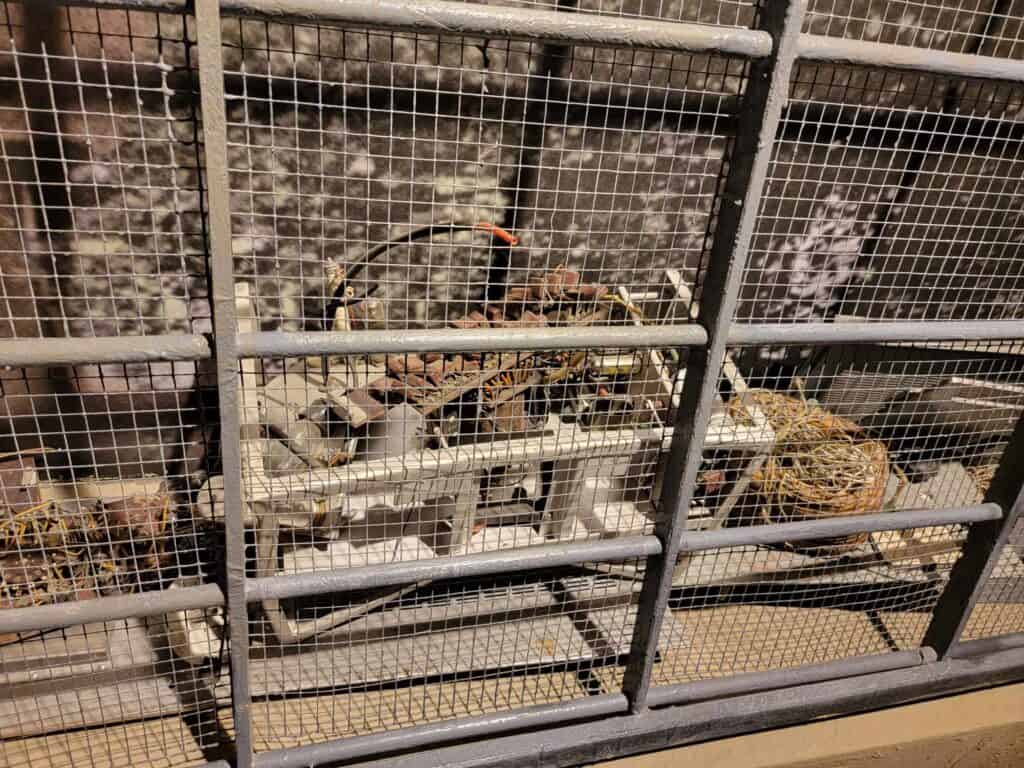
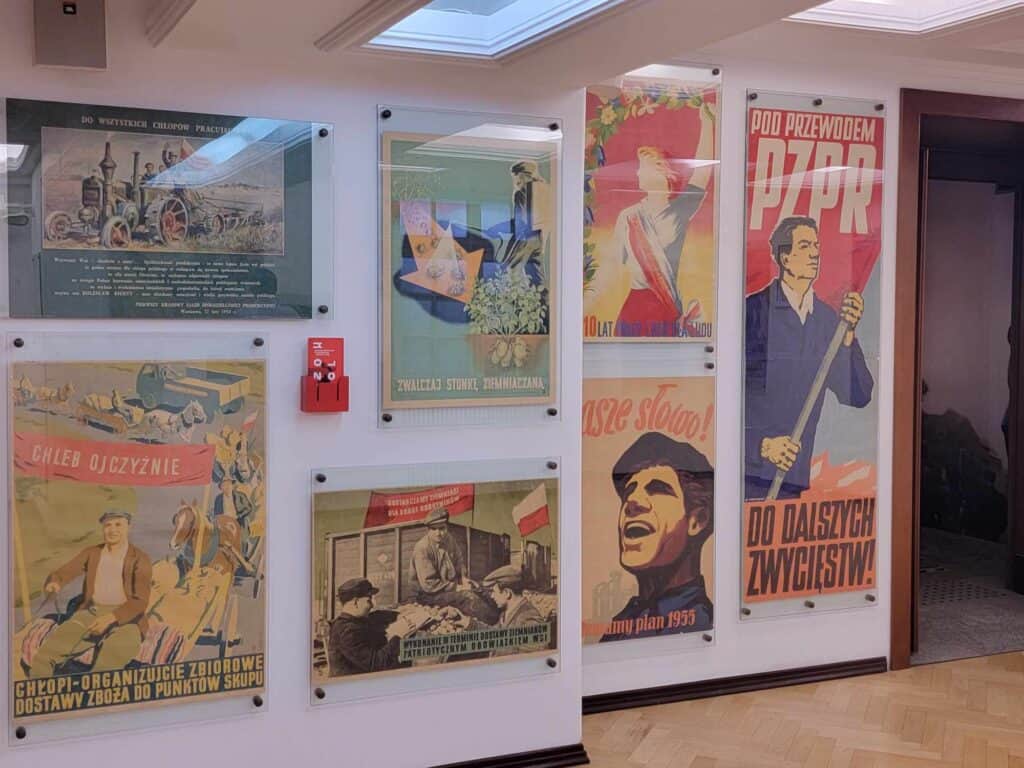
Located inconspicuously in a side entrance of the Zamek Cultural Center (the former palace built for Kaiser Wilhelm II in the early 20th century), you will find the 1956 Uprising Museum. Its purpose lies in commemorating the first armed Polish resistance against the post-war communist regime. In this basement museum you’ll find a treasure trove of old photos, audio recordings, newspaper clippings, memorabilia, and tributes to those who rose up against oppression against the Soviet government.
Most but not all of the displays have information in English, and a visit here will definitely give a window into the spirit of Poznań and its not-so-distant history. Allow about an hour or a little more here.
Open Tuesday – Saturday 10:00am-5:00pm. Sunday from 10:00am-4:00pm. Closed on Mondays.
Admission is 15zł (about $3.50), and Tuesdays are free.
Check out this ⭐️⭐️⭐️⭐️⭐️-rated historical 3-hour tour of Poznan!
12. Palm House
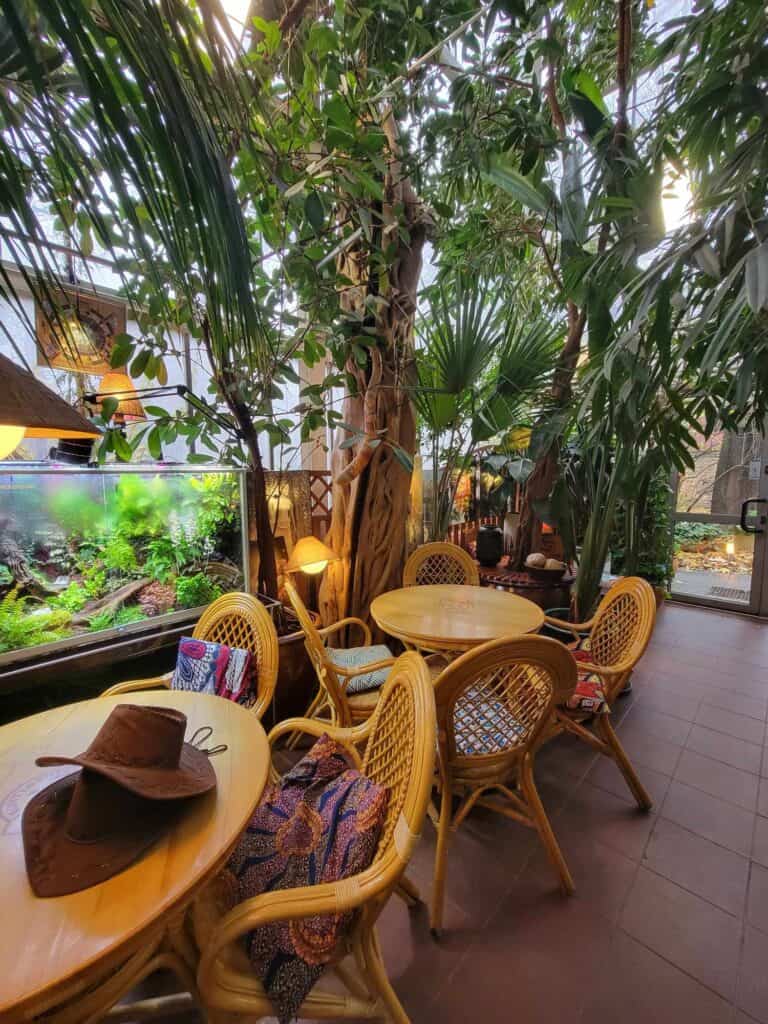


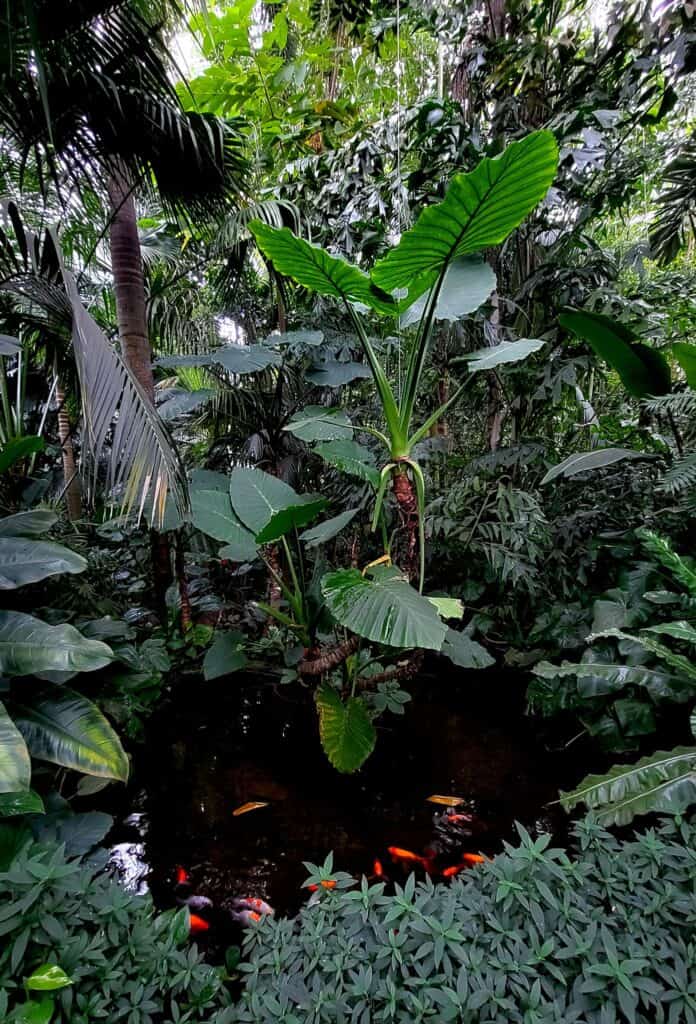
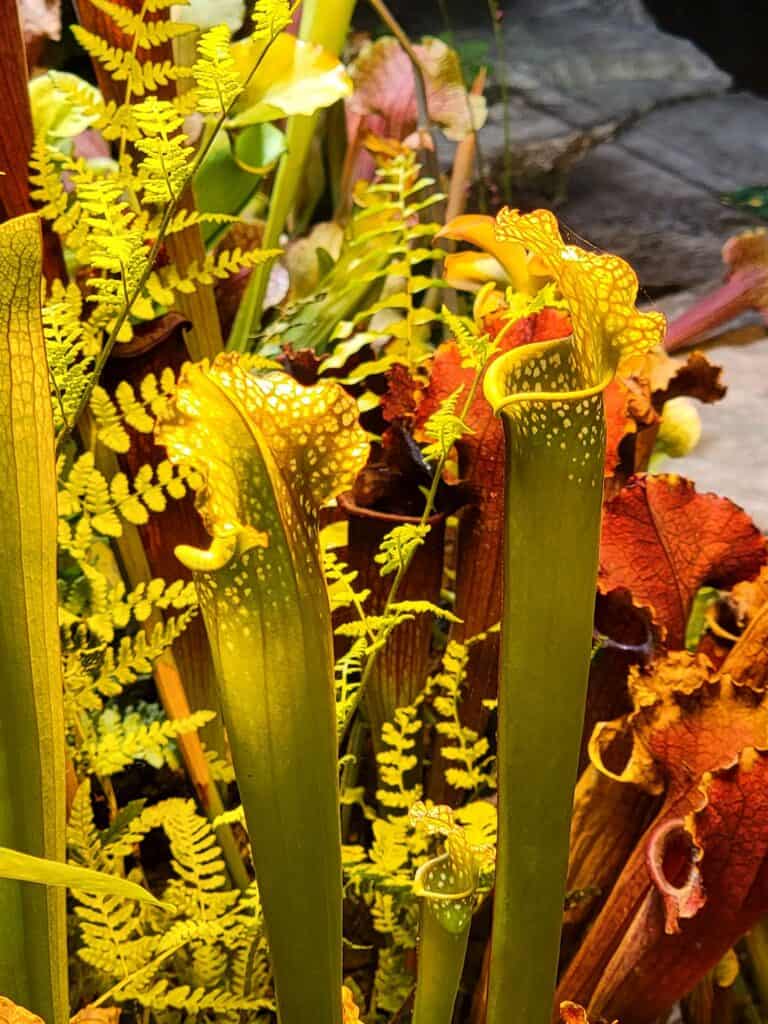
The Poznan Palm House is over a hundred years old and one of the largest enclosed greenhouses of its kind in Europe. It has 9 pavilions featuring different ecosystems, from rainforest to savannah. It also houses Europe’s largest collection of cacti! There were intermittent animal features too, like turtles, fish, a few birds, and even a little aquarium.
But the critters who stole the show were leafcutter ants! They have a whole habitat set up and when we were there, they were hard at work on a bouquet of flowers, snipping and carrying their treasure up a log and into a series of tunnels. They popped out in a viewing area right at the entrance of the café! I could have stayed and nerded out on them for a while. Better than reality TV!
It’s especially nice to visit the Palm House on a chilly blustery day like we did. It was a lovely little escape into a tropical (or temperate) paradise! The café is a must, with greenery everywhere and delectable baked goods, coffee and tea.
Also check out the gift shop that sells real botanicals from the plants!
The hours of operation change seasonally but you can find them HERE. Closed on Mondays.
Regular adult admission is about $4.
For much more about a visit to the Poznan Palm House, check out this article!
13. Historyland (Lego Museum)
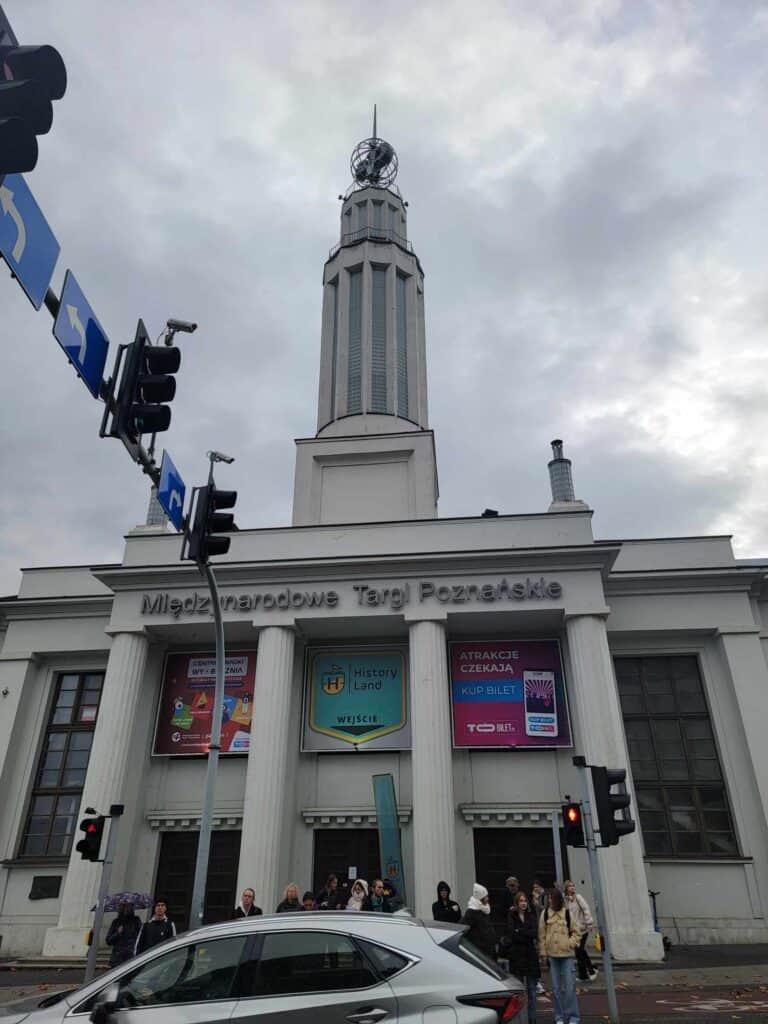

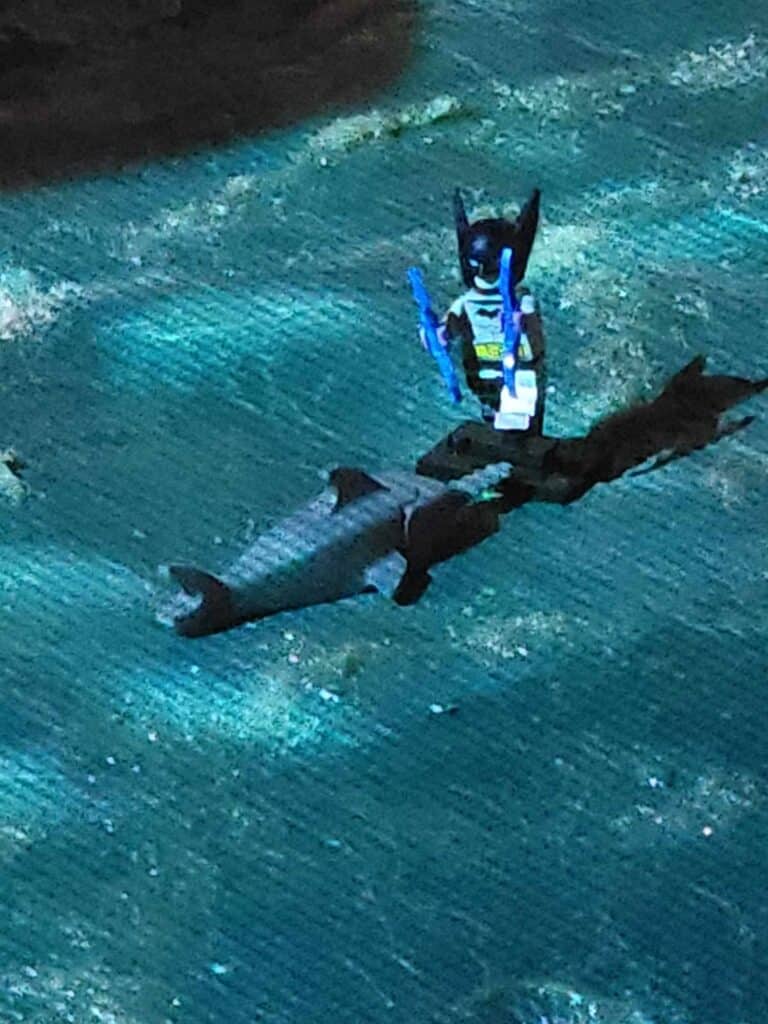
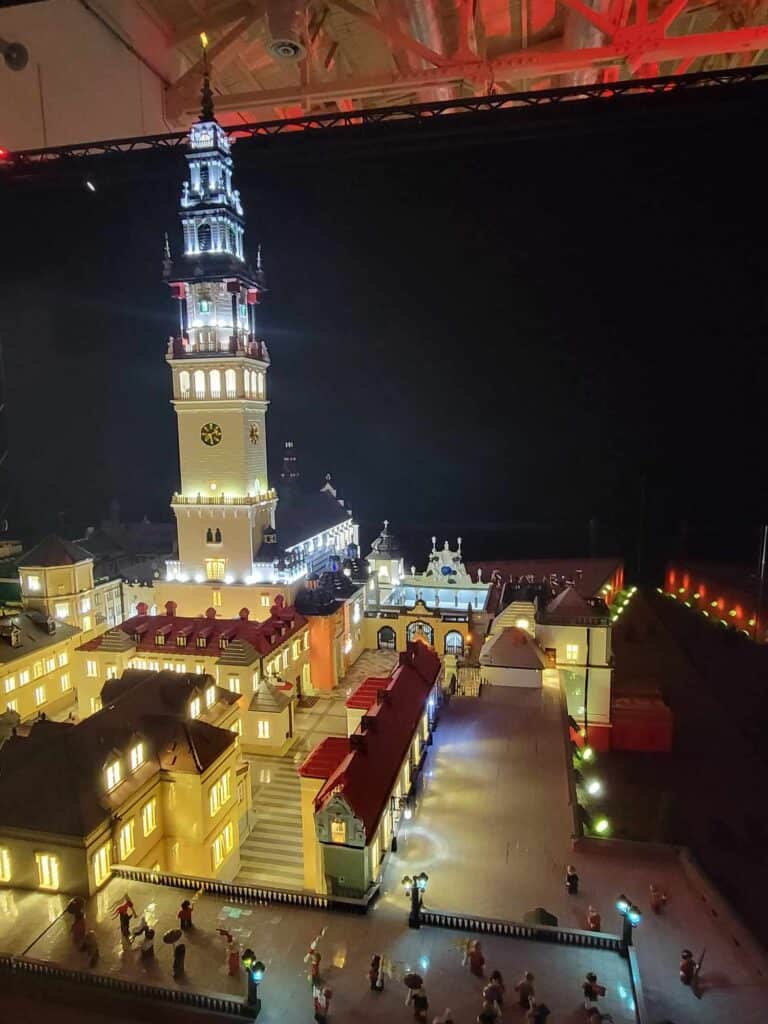
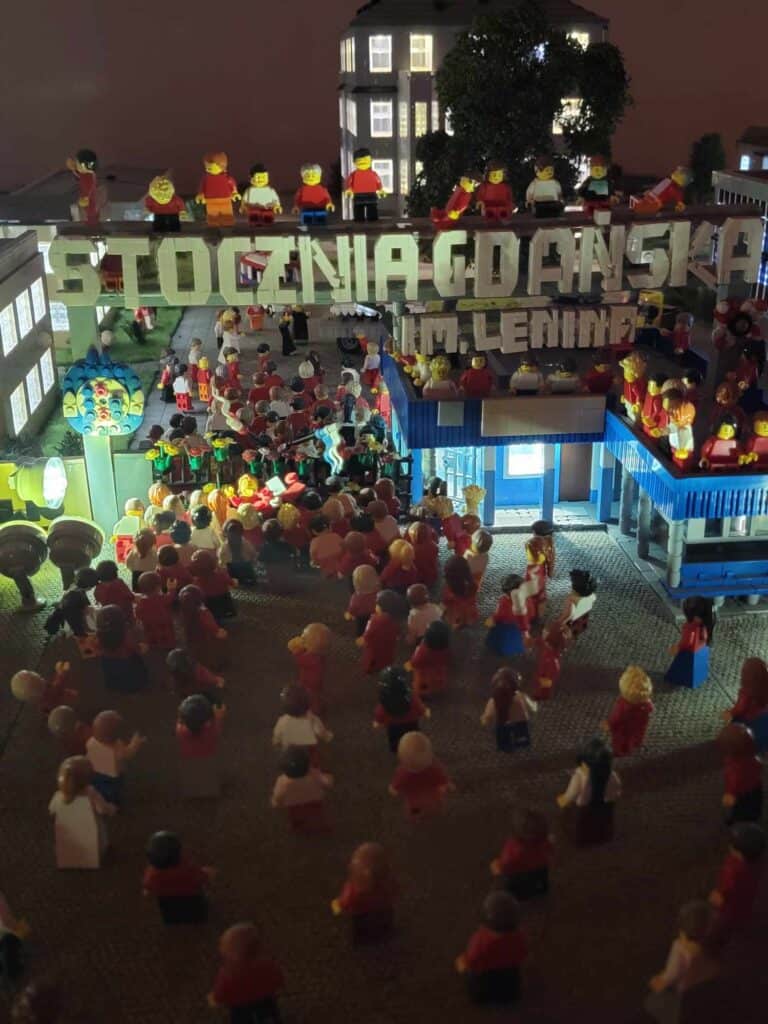
Historyland is an attraction that depicts the history of Poland in Legos! It’s obviously a magnet for school field trips, but we discovered it’s not just a kids’ museum. The structures astound with their sheer size, and complexity. Everything from one of the first ancient settlements in Biskupin (complete with Lego sheep), to the massive battle of Grunwald, the Sea Battle of Olive, dragons of legend, the trumpeter of Krakow, and the epic World War II battle of Monte Casino with Polish forces in Italy fills the building.
With Lego dioramas using more than half a million bricks, moving lights and shadows, and multimedia presentations it was a really great immersion into the heart of the events that shaped Polish history.
Did I expect to get choked up at the Lego museum? No, I did not. But after watching the video on the defense and surrender of the Westerplatte and the losses at Monte Casino, and the Solidarity movement and uprising at the docks in the 1980s, I totally needed a hanky.
There are also some fun little “Easter eggs” like Batman making an appearance in the Sea Battle of Olive, and Spiderman climbing up the wall of a castle. It’s fun, quirky, and a must-see. If you’re looking for things to do in Poznań with kids, this should be top of the list. The whole thing takes about an hour to an hour and a half.
Tickets are 38 zł (about $9.00 for adults) which includes a good audioguide in English.
You can find their website HERE.
14. Archaeological Museum
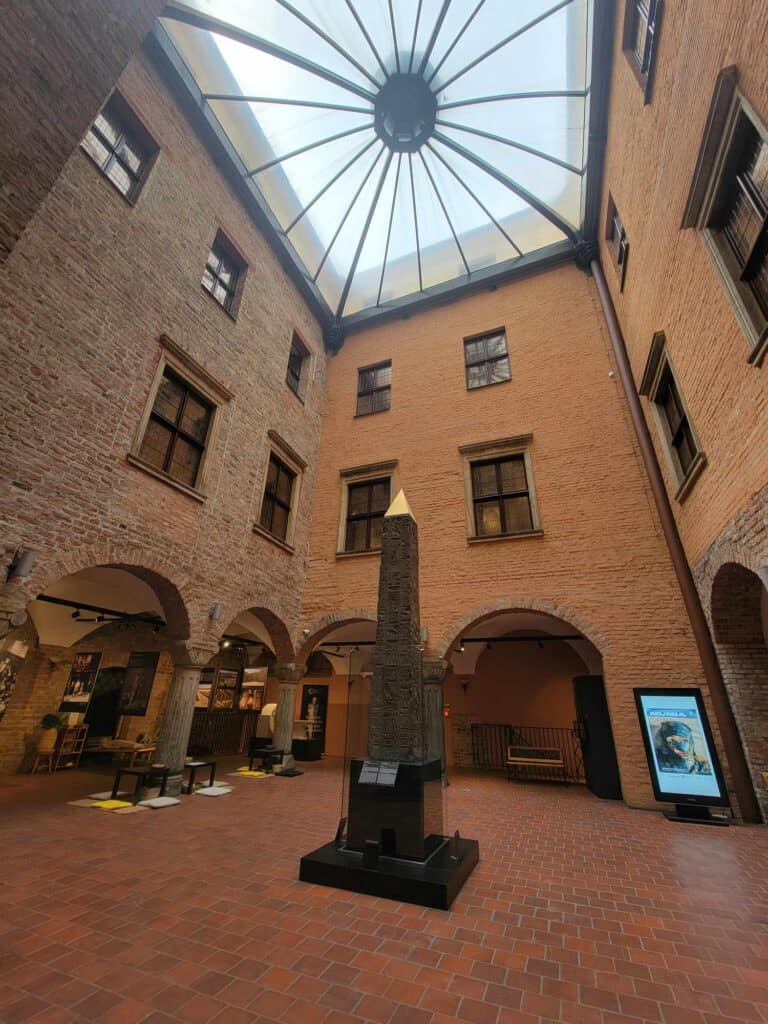
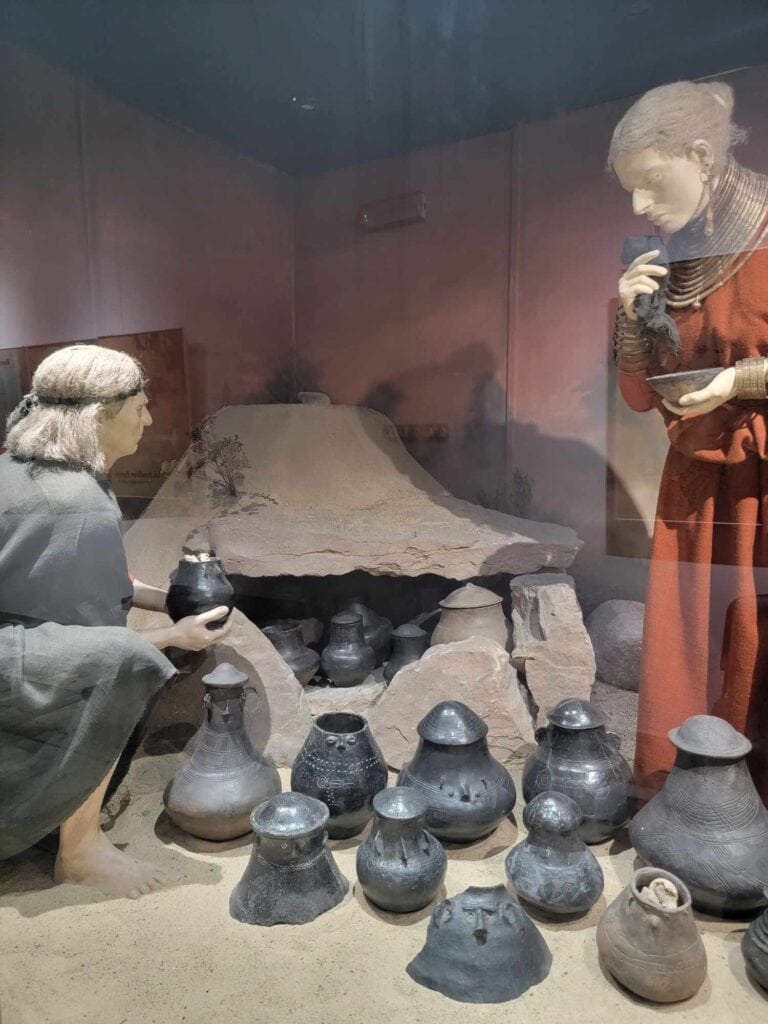
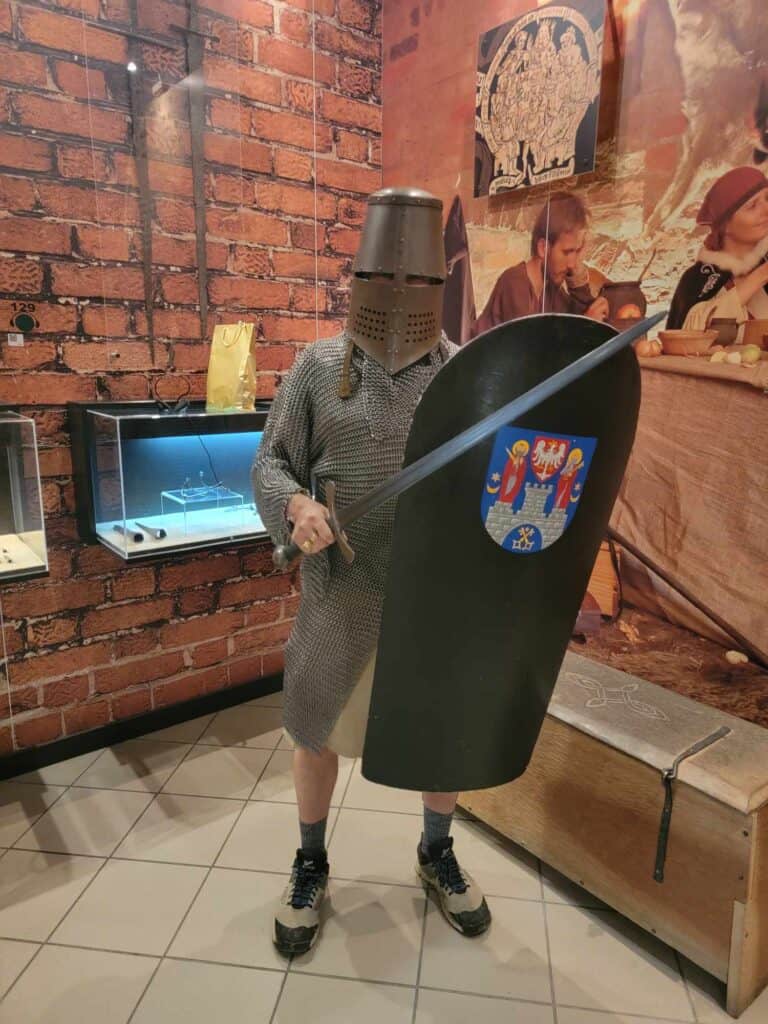
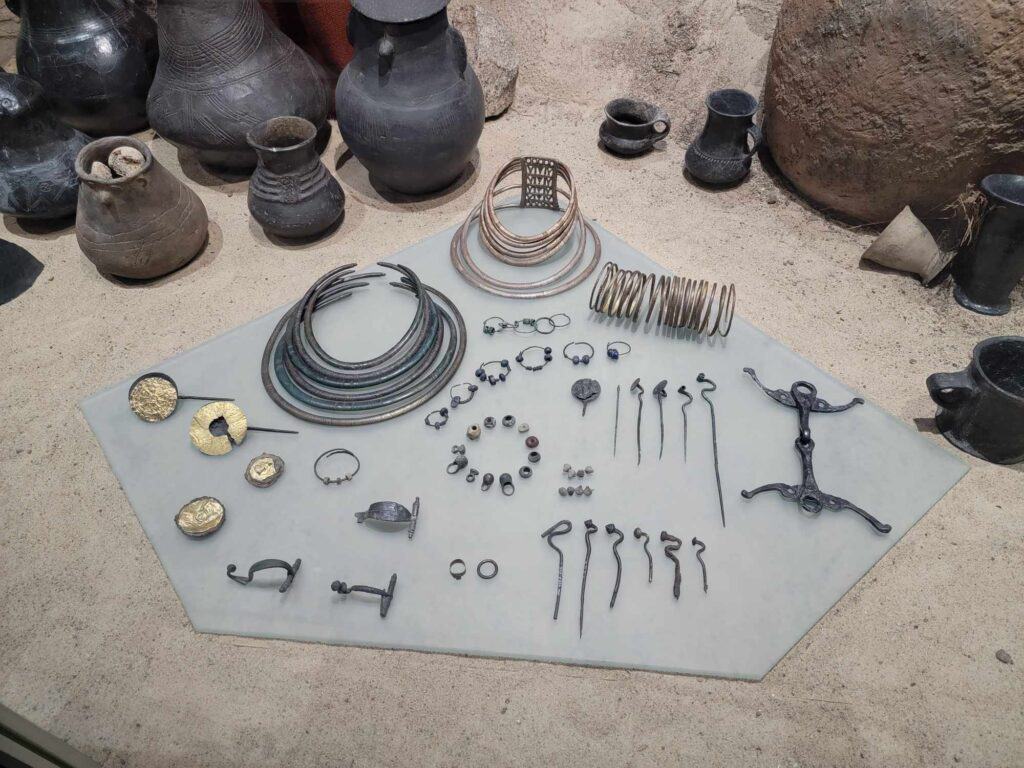
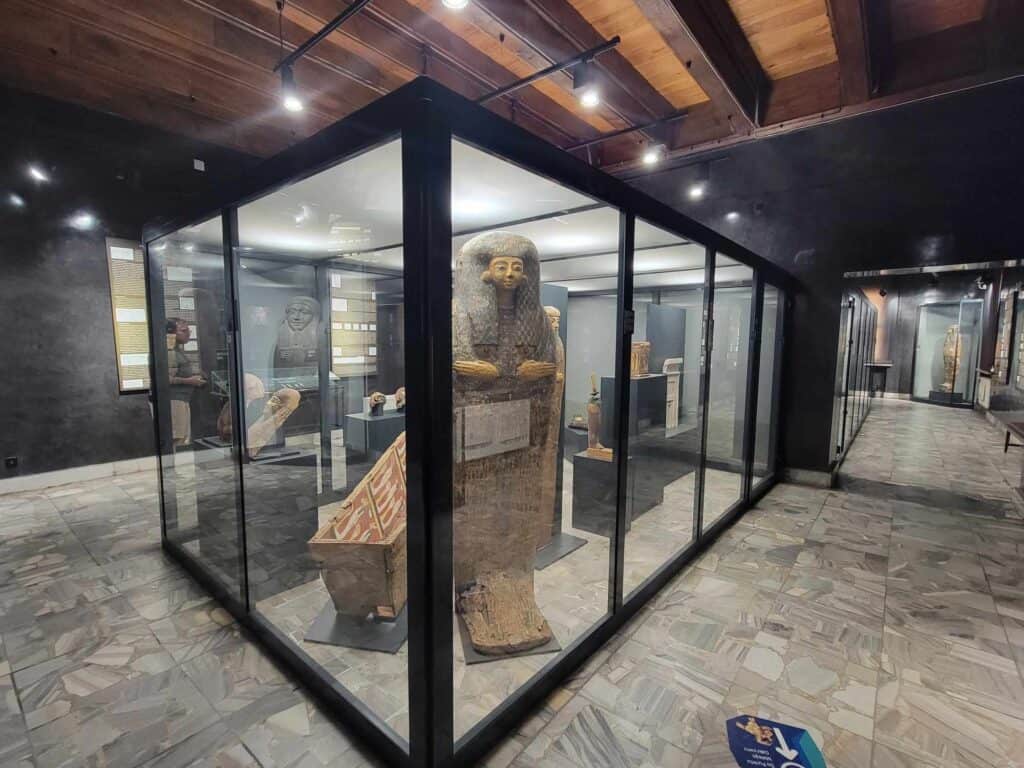
You can find the Poznan Archaeological Museum housed in the Renaissance Gorki palace that dates from the first half of the 16th century. You can even visit its Renaissance courtyard featuring Poland’s only Egyptian obelisk free of charge. At the ticket counter, don’t forget to ask for the English audioguide to enrich your experience as you go through the museum. This is a much better option than trying to use Google translate on the information cards, which are mostly in Polish.
The museum showcases fantastic collections of artifacts from the Stone Age to the early Medieval period in the region. The impressive collection reveals the truly fascinating origins of Poland and dives deep into its early history.
There is also an exhibit featuring a large and impressive collection of ancient Egyptian art and artifacts. Surprising, but very cool!
They have a great website HERE where you can learn more about the museum and what temporary exhibitions you can catch during your visit.
The museum is closed Mondays, and free on Saturdays. Other hours of operation vary seasonally. You can find them HERE. Regular tickets are 15zł (about $3.75) but discounted rates for families and children can be found HERE.
15. Enigma Cipher Center (Centrum Szyfrow Enigma)
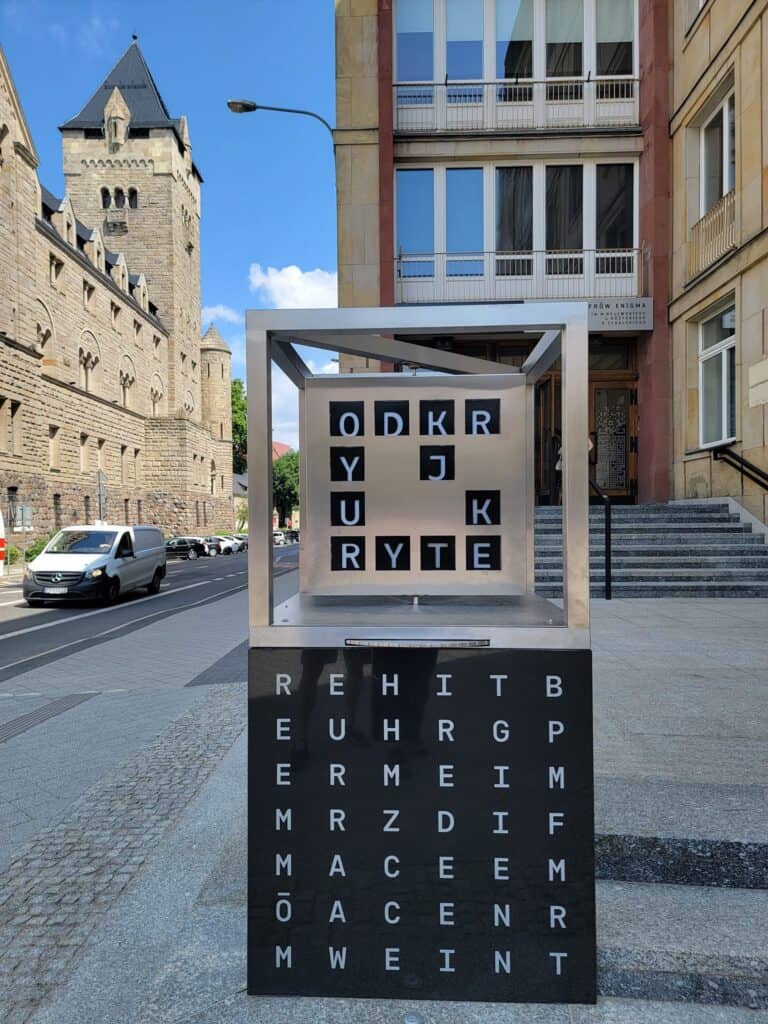
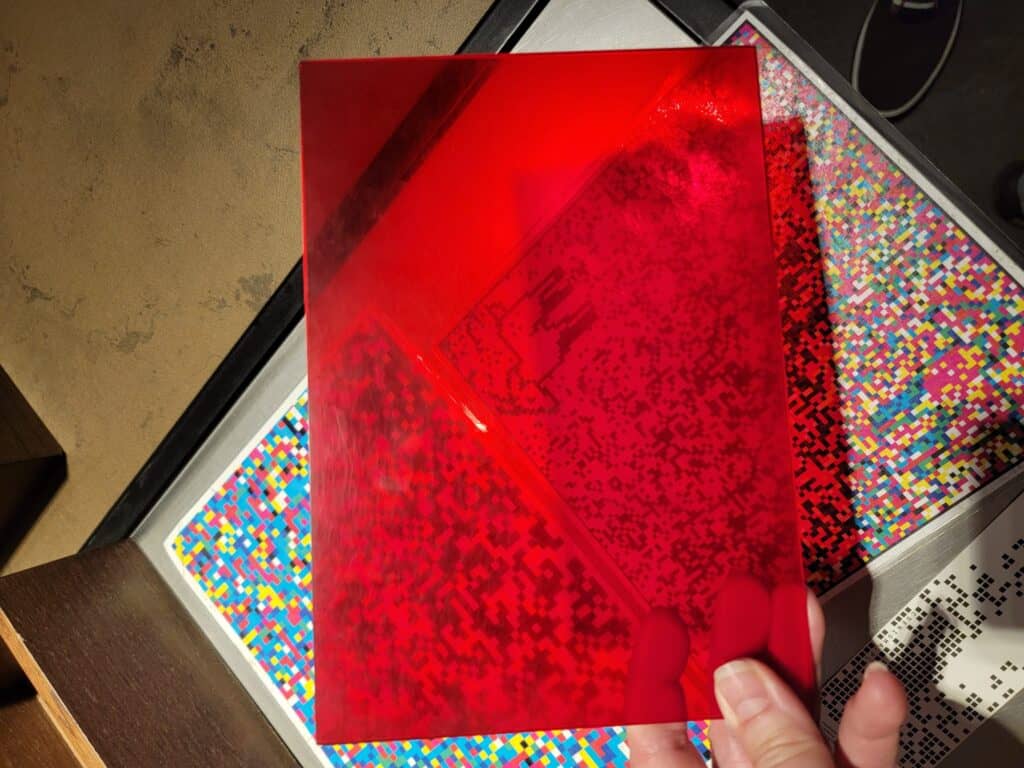
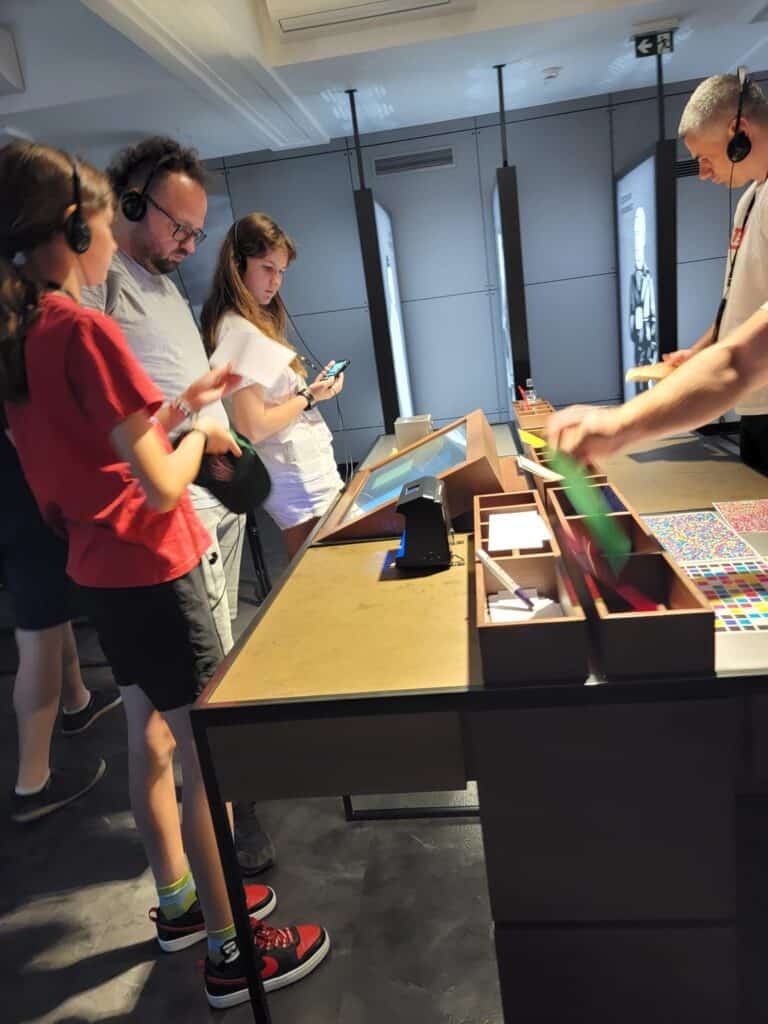
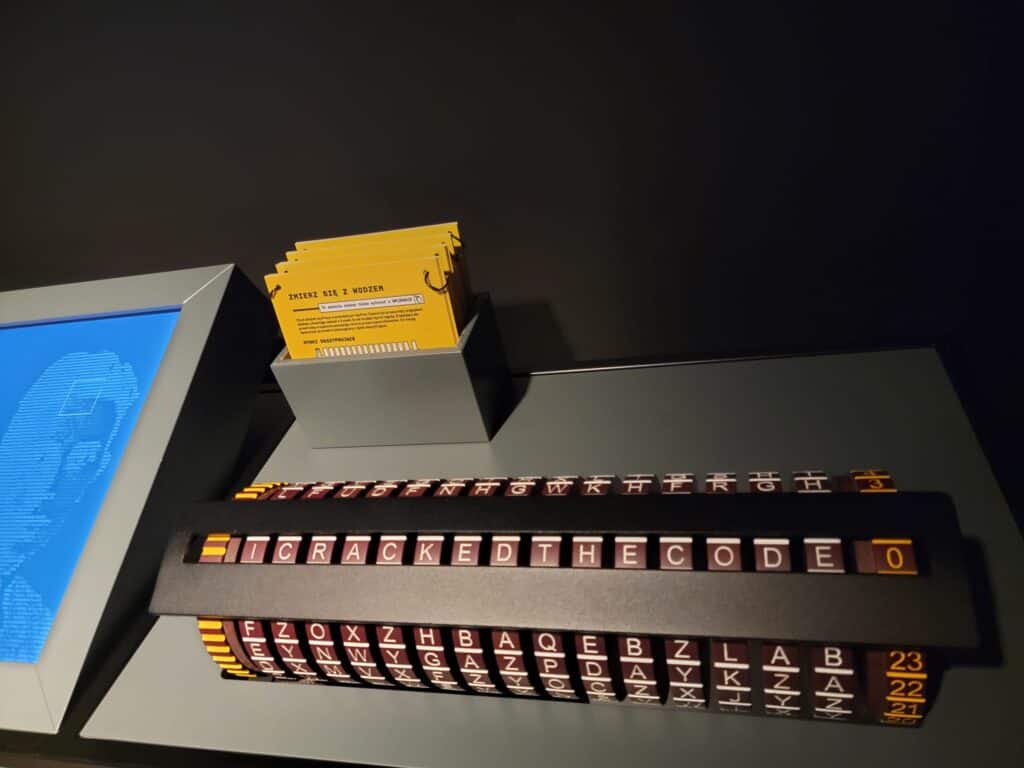
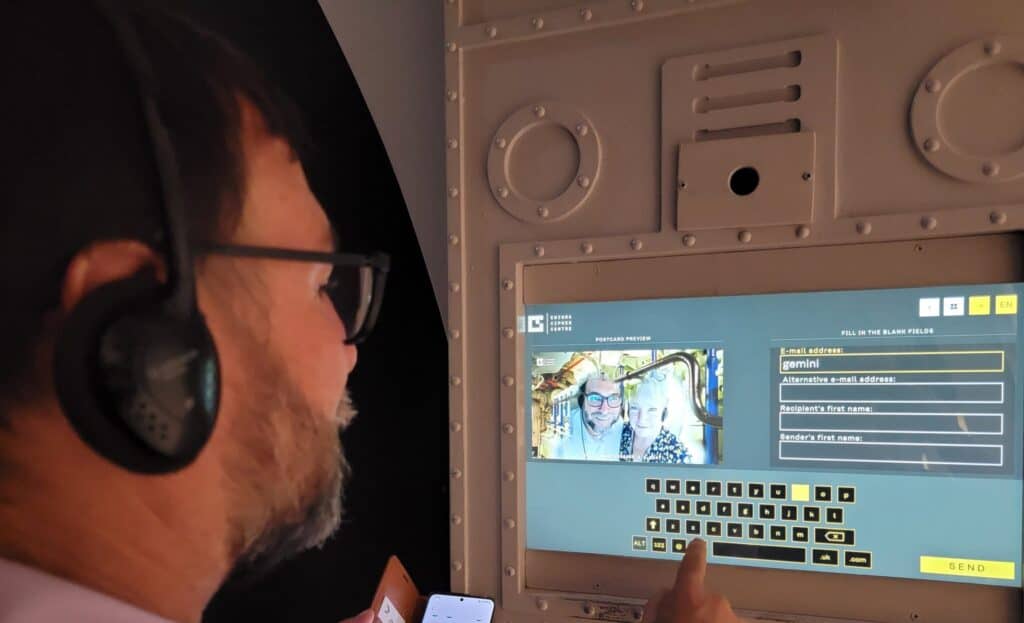
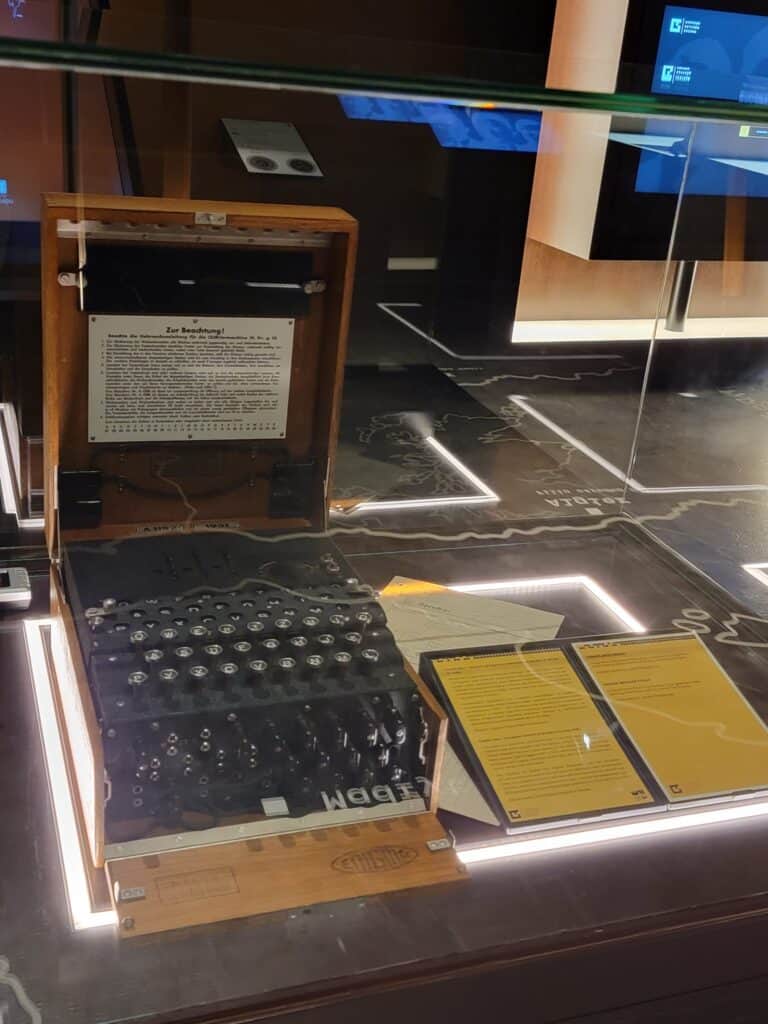
The Enigma Museum is one of the most captivating and unique things to do in Poznan. It’s a blast for anyone who likes codes, ciphers, history, or spy tales! They did a great job of creating an interactive experience in both Polish and English. The museum covers the history of ciphers and codes, provided lots of hands-on fun, and went into great detail about the Nazi’s “Enigma machine” used during World War II, the role of three Polish mathematicians in cracking that code, and their harrowing escape. Lots of short movies were available throughout, plus a terrific audio tour. Don’t forget to pick up a headset when you go in. And look for the surprise display on Thomas Jefferson!
Hollywood definitely had its way with the story about cracking the Enigma code in the movie The Imitation Game with Benedict Cumberbatch. An amazing amount of fascinating information never made it to the silver screen, including the involvement of the Polish mathematicians. But Poznań doesn’t forget. Through this innovative museum, you can really immerse yourself in the multimedia exhibition that tells the full story of the Polish cryptologists: Marian Rejewski, Henryk Zygalski and Jerzy Różycki. So here’s to the unsung heros at the Polish Cipher Bureau in Poznań!
The Cipher Center is closed on Mondays. Admission is about $6.50 for adults, and there are also discounted and family rates. Find current pricing information and hours of operation at the official website HERE.
16. National Museum
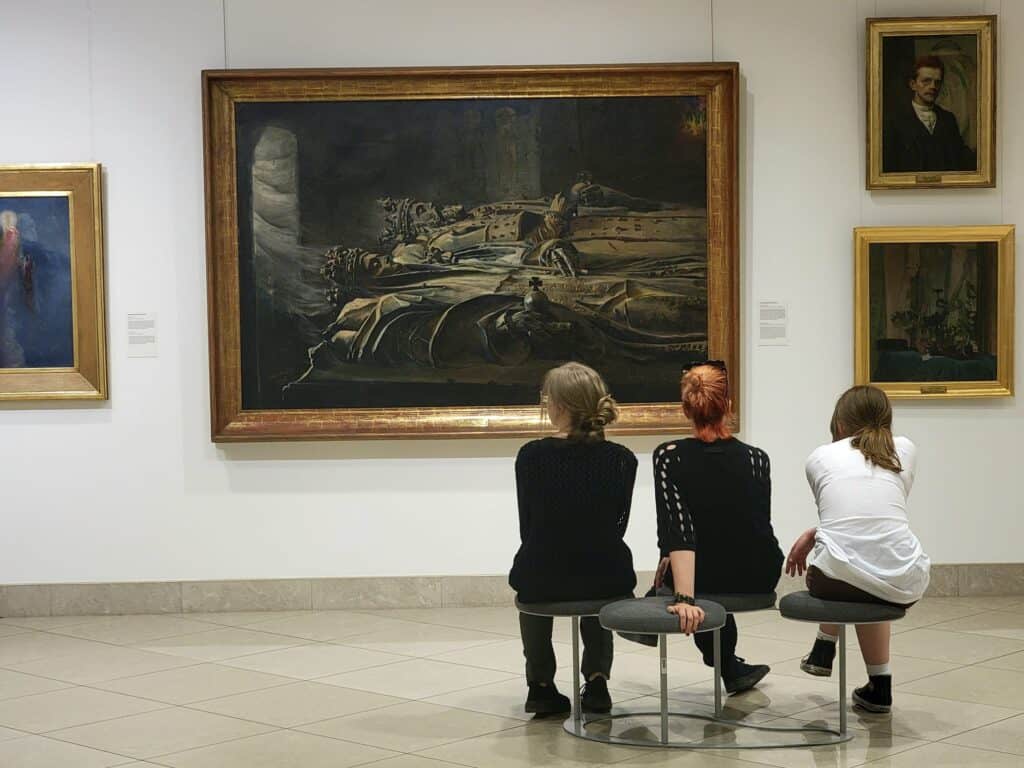
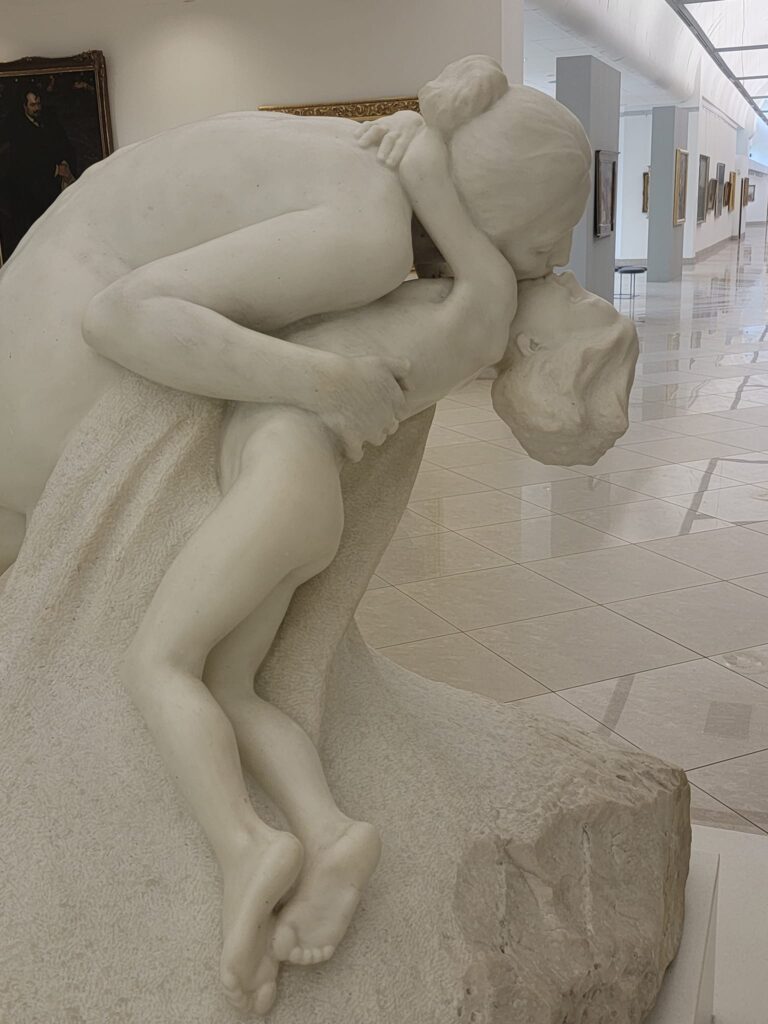
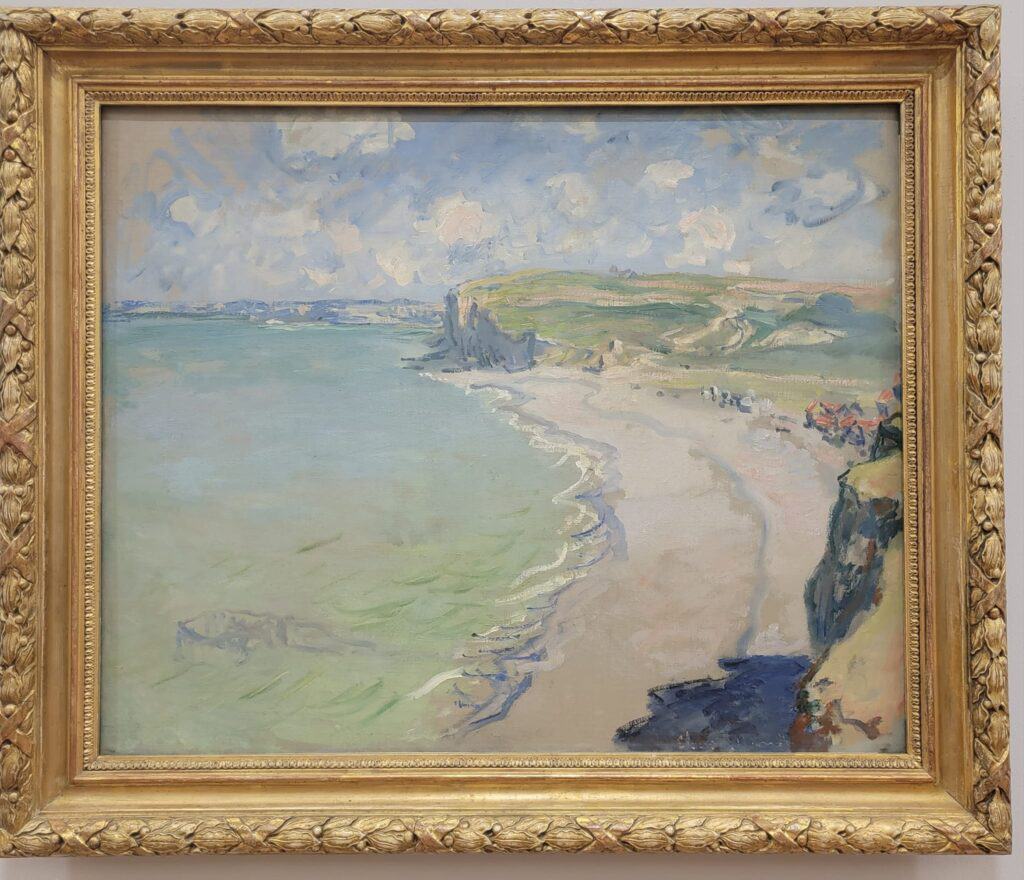
For lovers of fine art, don’t neglect a stop here. Many incredible Polish artists are featured, of course, but many surprises await! The museum even has a Botticelli and a Monet which was stolen and recovered. You can read my story about an amazing encounter, and my full experience at the museum HERE.
17. Stary Browar (The Old Brewery)
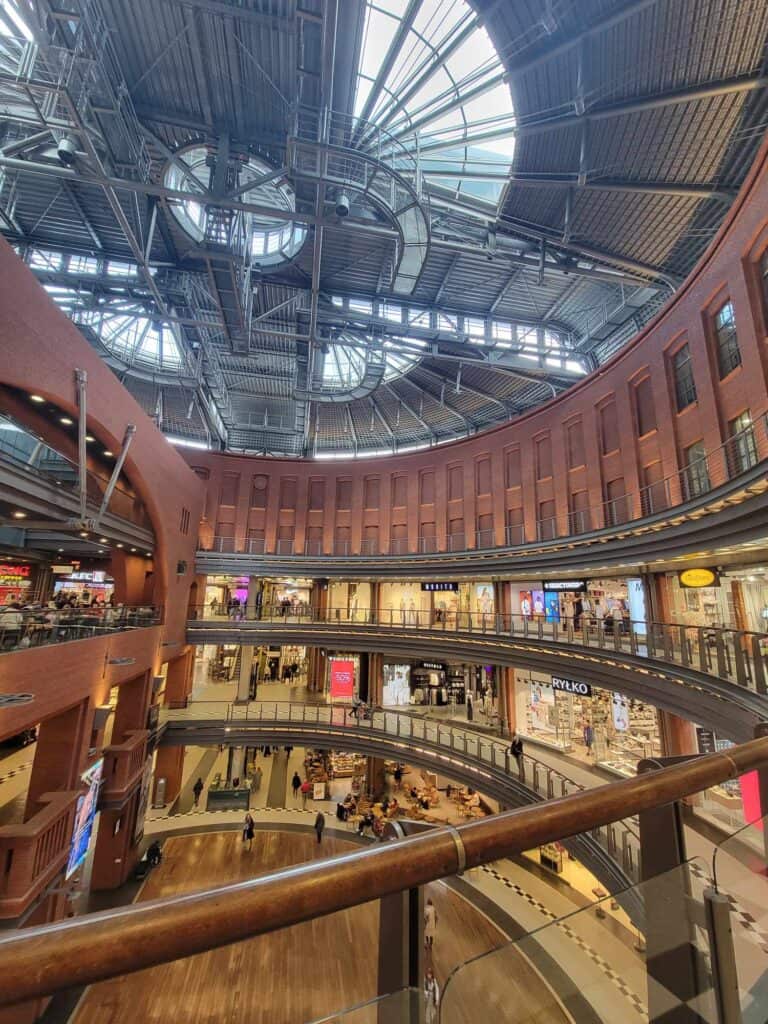
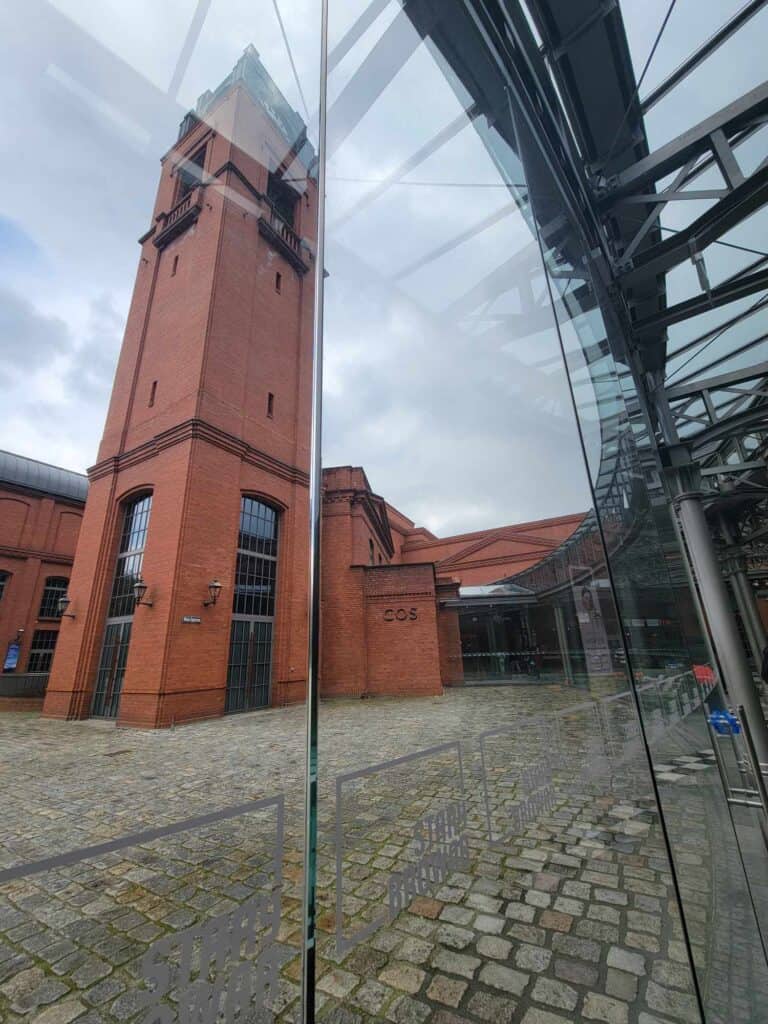
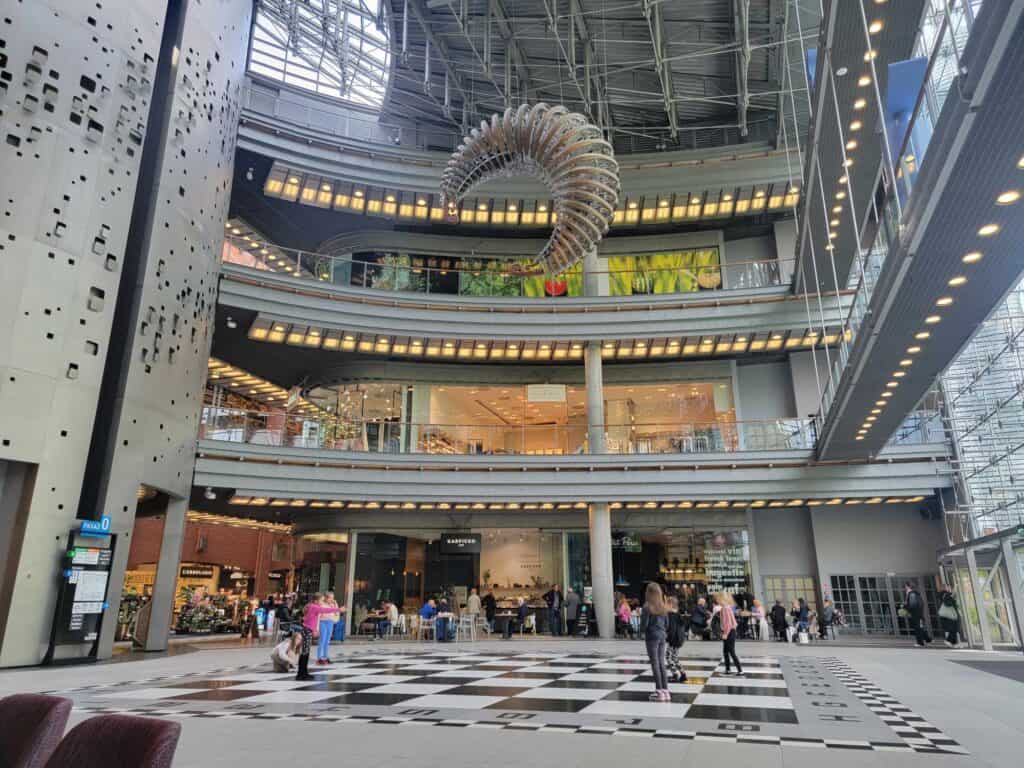
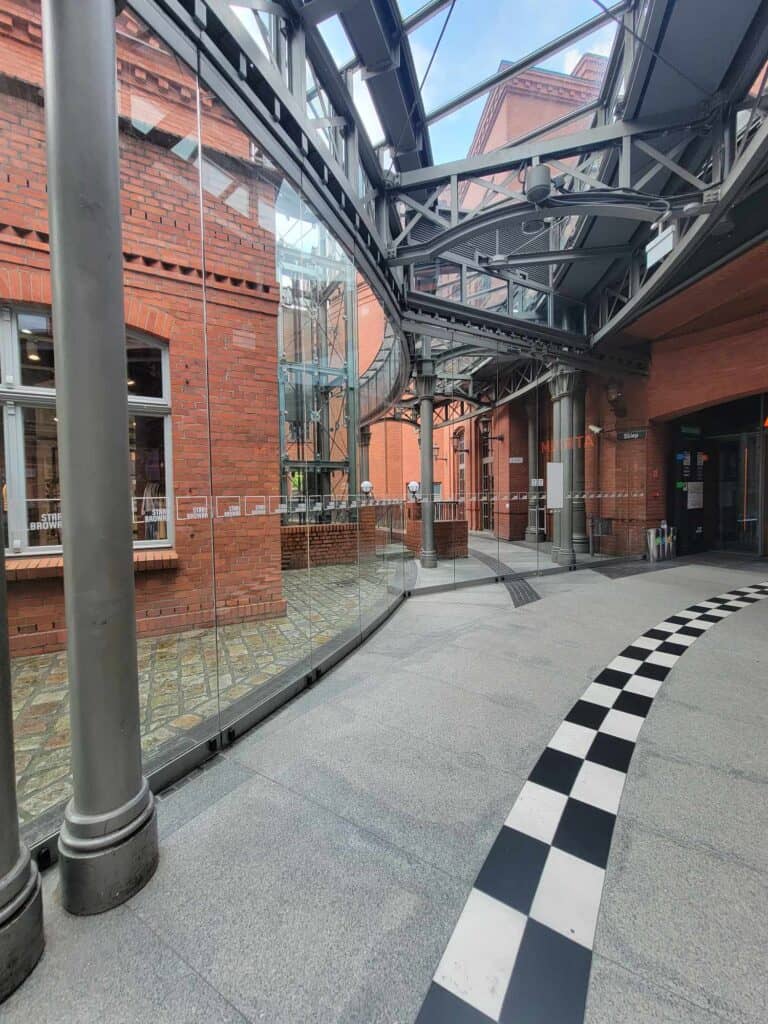
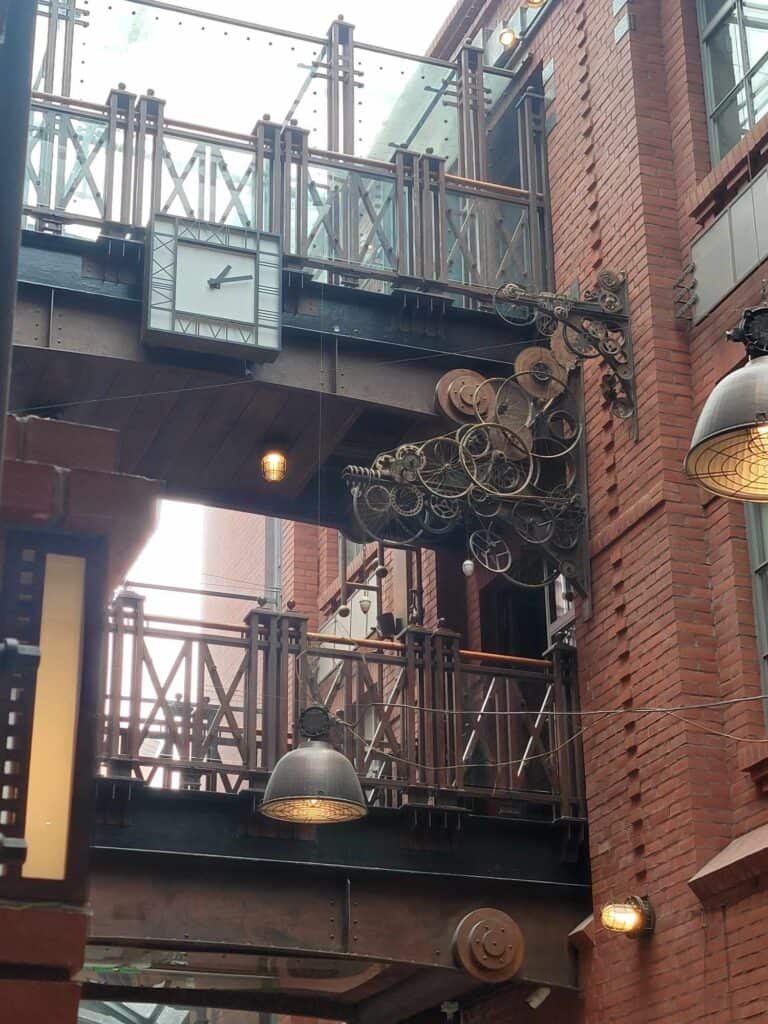
If you feel like shopping, and even if you don’t, check out Poznan’s famous award-winning Stary Browar steampunk mall! It’s a former brewery made of brick that has been transformed into a visual wonderland. There are over 200 shops and boutiques, and also a handful of really great restaurants and a food court.
I ended up not buying anything, but spent a happy couple hours window shopping, taking pictures, and enjoying a sandwich and coffee at Costa Coffee which is right near the main entrance.
Parking is available under the building, but it’s only about a 15 minute walk from the center of the old town.
18. Posnania
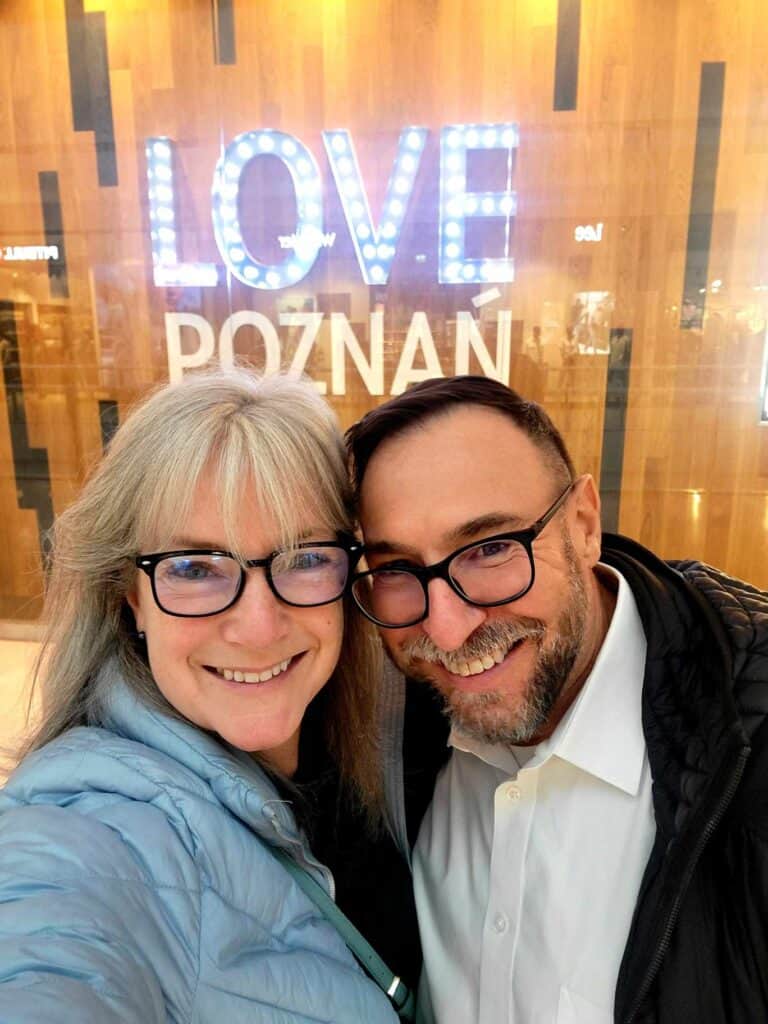
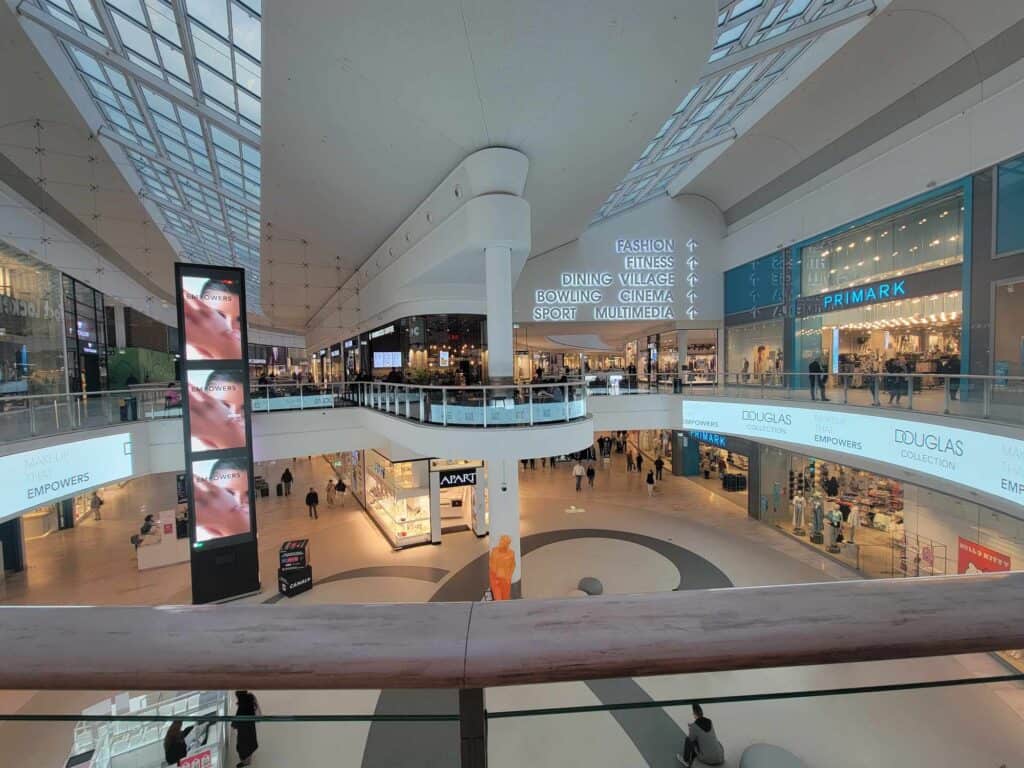
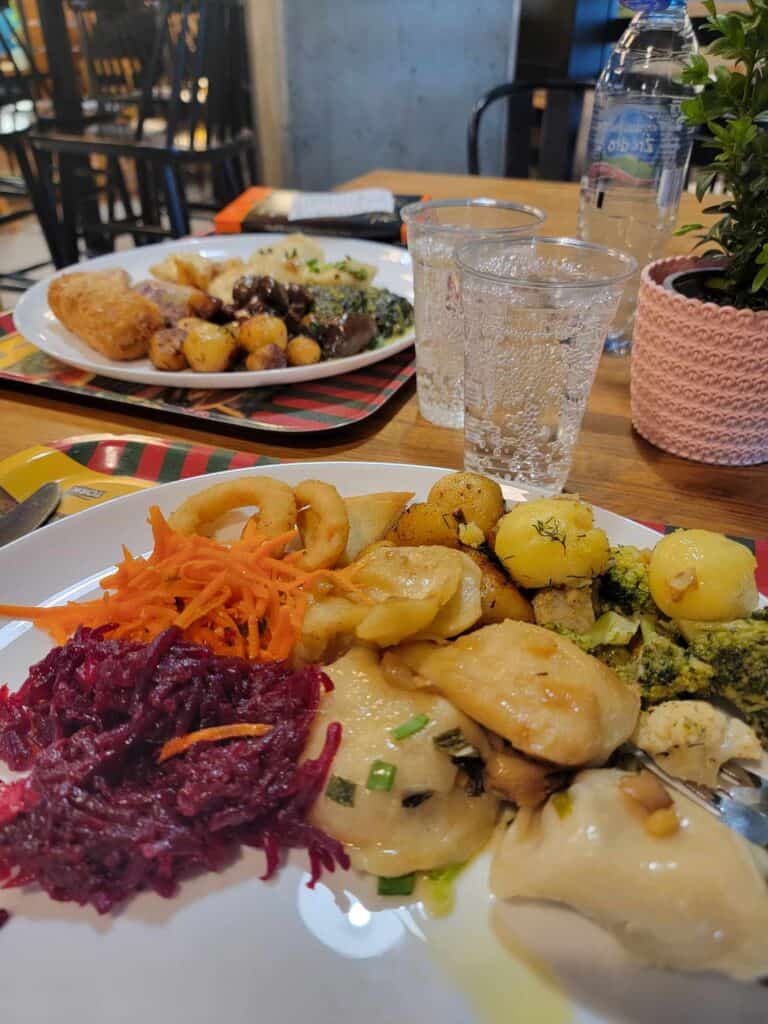
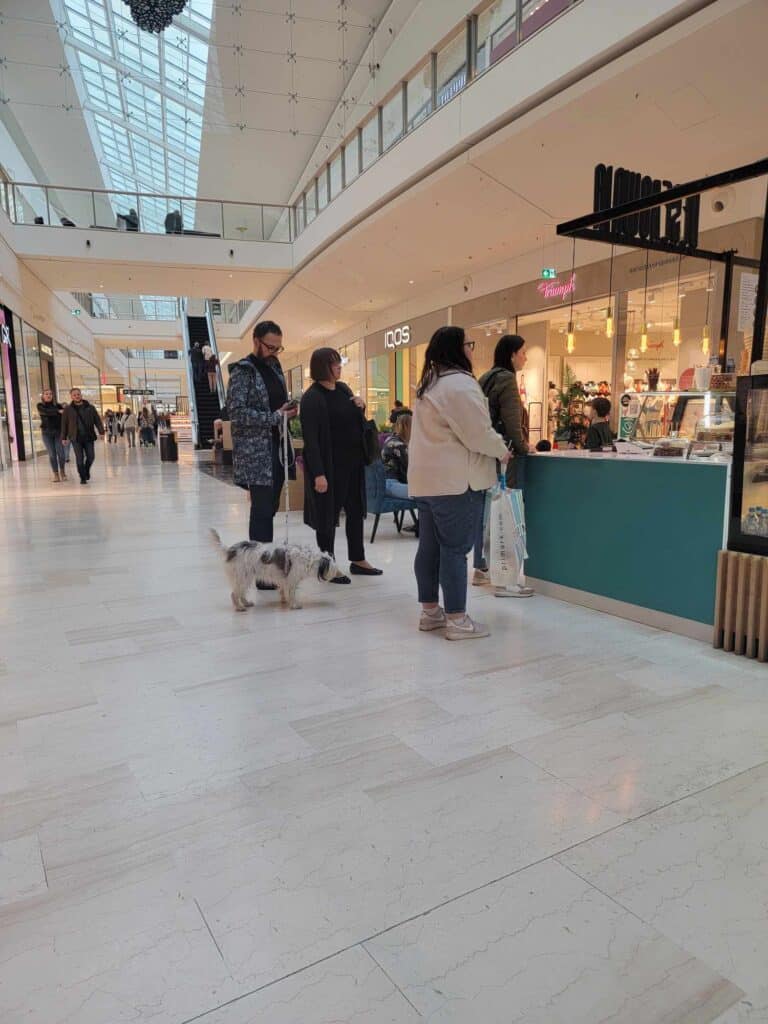
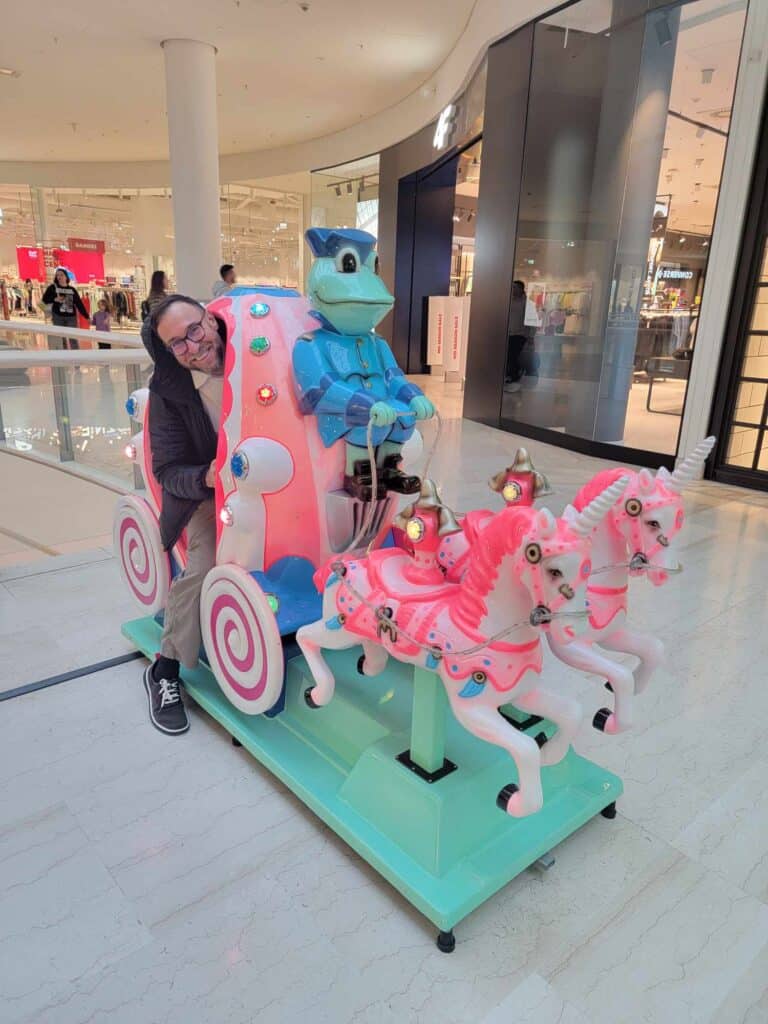
If you didn’t get enough mall at Stary Browar, then this is the place for you. It is absolutely immense! I heard from locals that people actually fly into Poznan just to go shopping here, and I believe it. This one has almost 300 stores and is about 3.45 million square feet making it one of the biggest shopping centers in all of Europe!
The design is full of glass, is very sleek and modern, and the huge expanses of walkways never make you feel claustrophobic.
Once again, I didn’t actually buy anything, but did enjoy a fabulous meal at Kuchnia Marche. This is a chain of buffet restaurants that serve cafeteria style. Load up your plate with all kinds of fabulous Polish food – pierogies, potatoes, and pork – oh my! There is also an amazing dessert selection. Then they weigh your plate at the end and you pay accordingly. My husband and I stuffed our faces, and each had a bottle of water all for about $28.
19. Poznan’s Citadel Park

If you have time in Poznan, definitely check out Citadel Park, the largest and most interesting park in the city. It is full of history and really worth a couple hours. It’s got ruins, art, flowers, green space, food, a museum, cemeteries, monuments, and a ton of history. And it’s very dog friendly! You can read all about the details of what you’ll find in the park at my post here.
20. The Armored Weaponry Museum

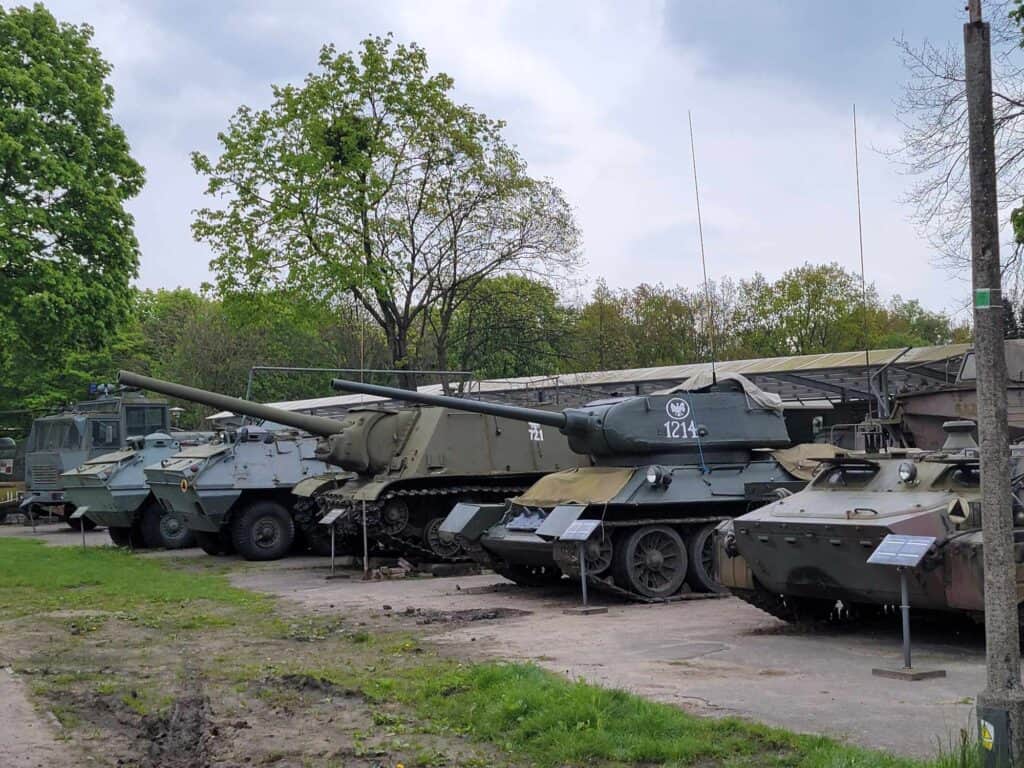
The museum is located in Citadel Park but deserves its own mention. If military history is your thing, the Armored Weaponry Museum is a must see. It houses the largest collection of armoured fighting vehicles in Poland. The museum displays about 40 vehicles from the First and Second World Wars, and the Cold War period. In addition to tanks, you’ll see self-propelled guns and rocket artillery; armored cars and personnel carriers; artillery tractors and recovery vehicles; and even the wreck of a Jagdpanzer IV.
DIY, Other Tours, and Transport
If you have limited time, want to do an all-encompassing tour, if you want a self-guided audio tour of the city, or to find foodie tours, shopping malls, and parks, click HERE!
If you are flying in or out of Poznań’s airport, do yourself a favor and book a car right from your hotel to the airport (or vice versa) to avoid taxi scrambles, or lugging bags on public transportation.
Where to Stay in Poznan
Looking for a great place to stay while you’re in Poznan? Check out our review of the fabulous Sheraton Poznan, a great home away from home – with or without your dog!
Have a great time in Poznan!
Check out this link for current weather conditions in Poznan
Related Posts:
- Is Poznan Worth Visiting? Poland’s Historical Capital is a Hidden Gem!
- Is Poznan Safe? Ultimate ‘What to Know Before You Go’
- The Imperial Castle in Poznan: 3rd Reich HQ Turned Vibrant Cultural Center
- The Poznan Palm House – A Lush Green Oasis, With Cake!
- Explore Citadel Park Poznan – Surprising History and Art at Every Turn
- Best Dog-Friendly Hotel in Poznan Poland – Sheraton Poznan
- The Hilarious Must-See Goat Clock in Poznan, Poland
- 10 Unforgettable Poznan Restaurants You Have to Try!
- Poznan Christmas Markets – Celebrating Poland’s Best Kept Secret
More City Guides to Hidden Gems in Europe
- 46 Best Things to Do in Rothenburg ob der Tauber
- One Day in Bamberg: Best Guide to Germany’s Medieval Beer Capital
- 21 Best Things to Do in Kaiserslautern Germany
- 11 Best Things to Do in Trier, Germany
- One Day in Aachen? Discover the Treasure!
- 11 Best Things to Do in Marburg, Germany’s Fairytale Town
- The Perfect Weekend in Cologne, Germany
- The 12 Best Things to Do in Epernay France
- 12 Incredible Things to See in Metz, France
- Ostuni the White City: Your Magical Gateway to Puglia
- The 7 Most Amazing Things to Do in Ravello Italy
- Is Pisa Worth Visiting? The Good and the Bad.
- Ravenna, Italy – Ultimate One-Day Itinerary!
- Altdorf Switzerland: Discover Where William Tell Shot the Legendary Apple
Be the first to know when we post new city guides and other helpful content about hidden gems in Europe!
